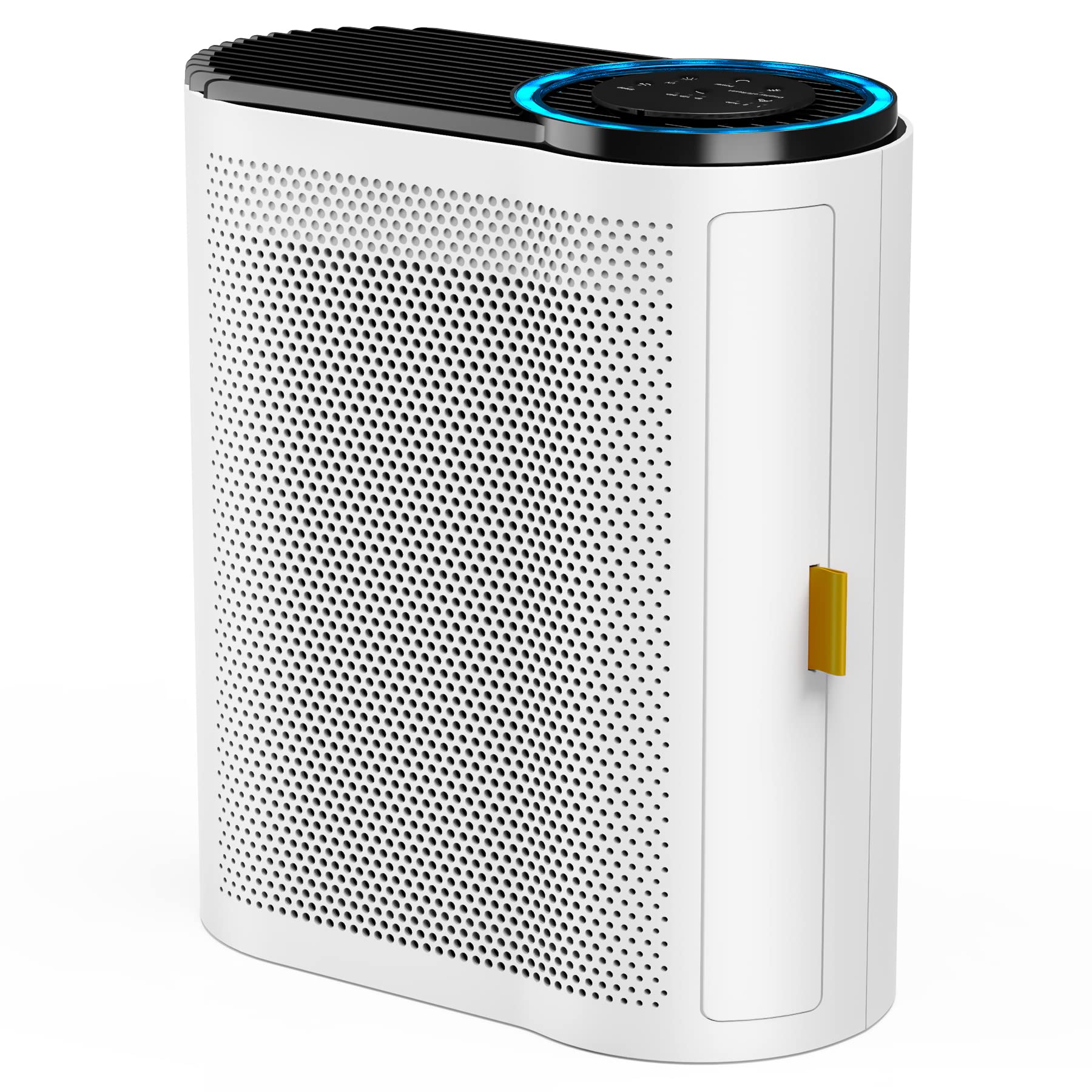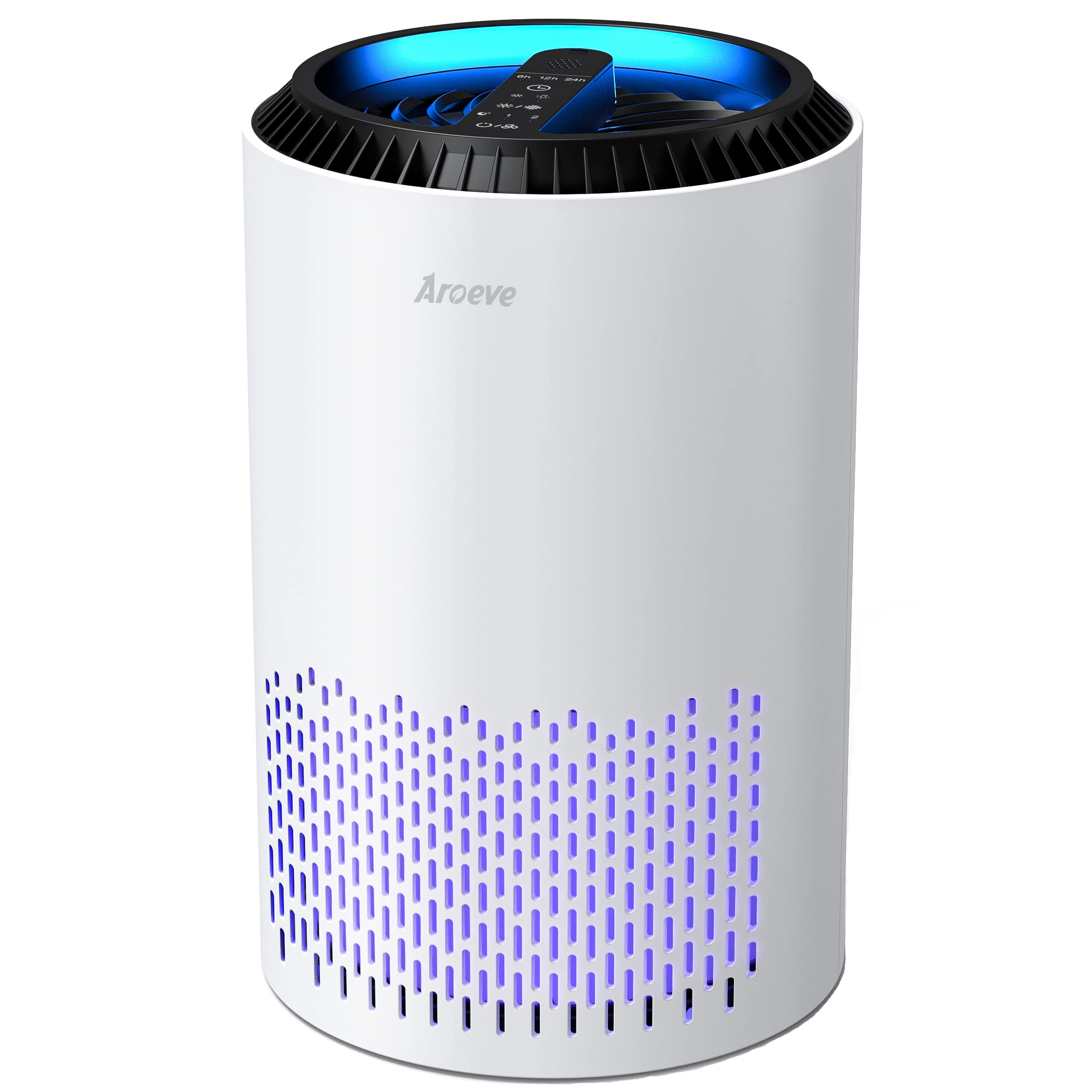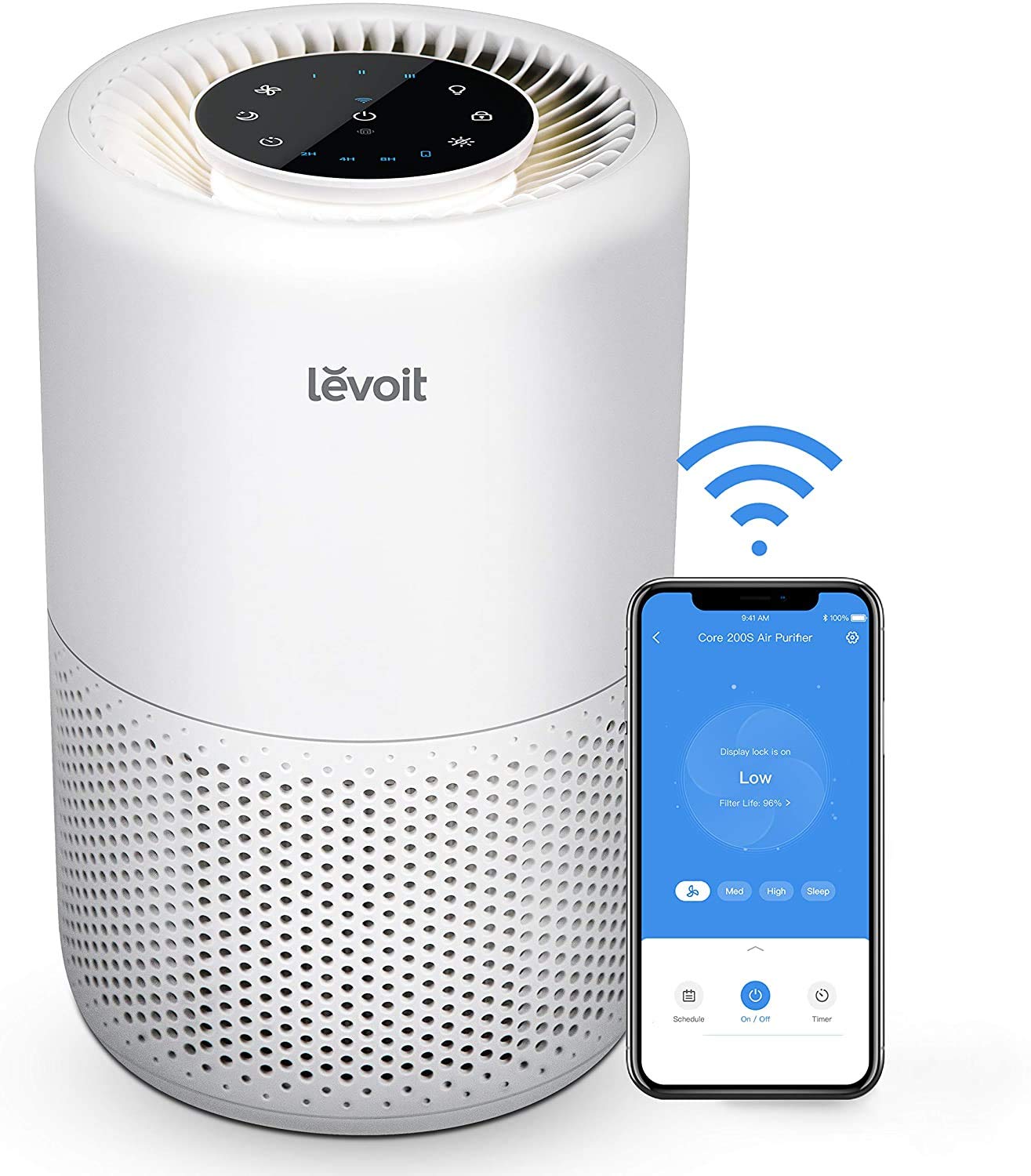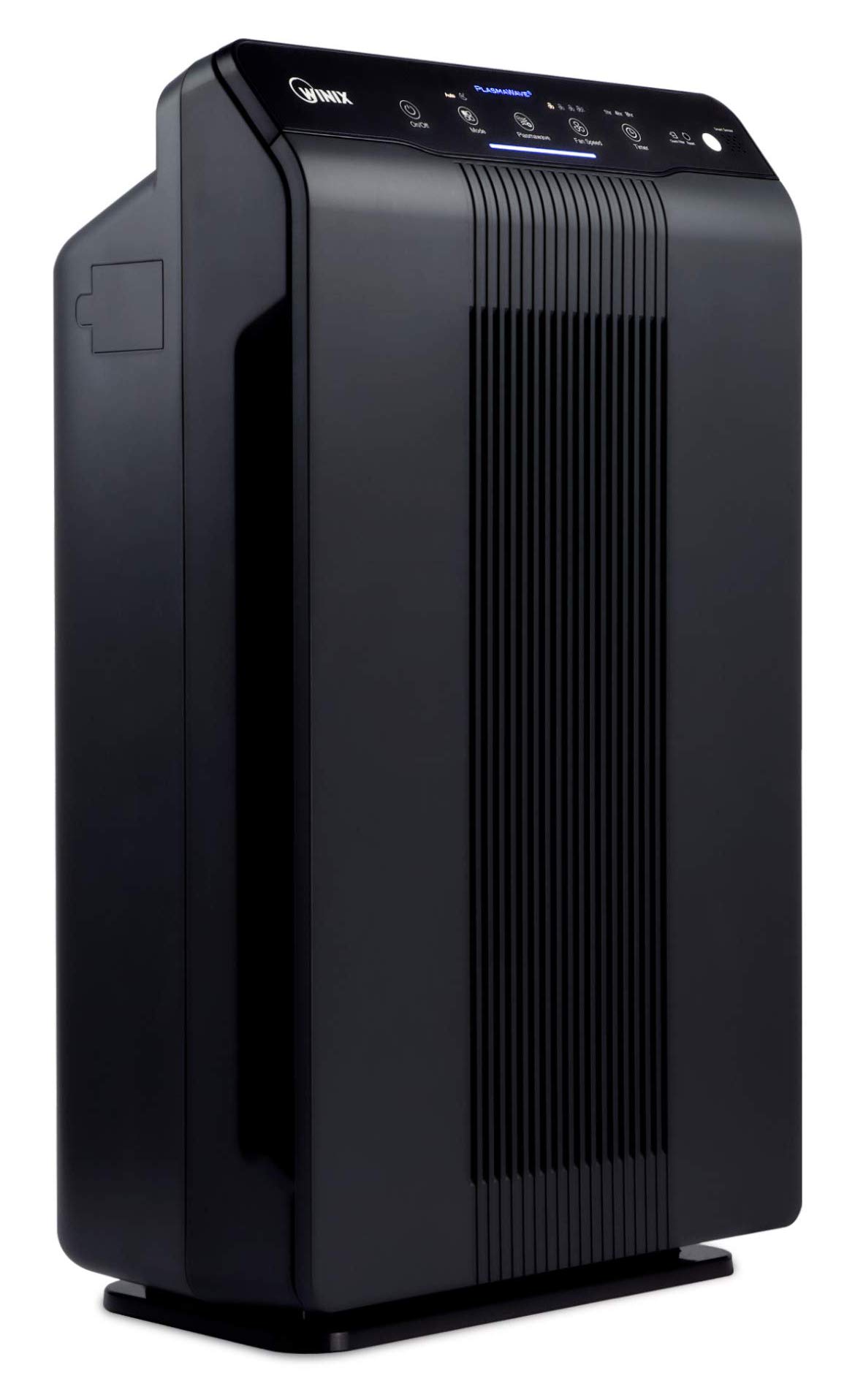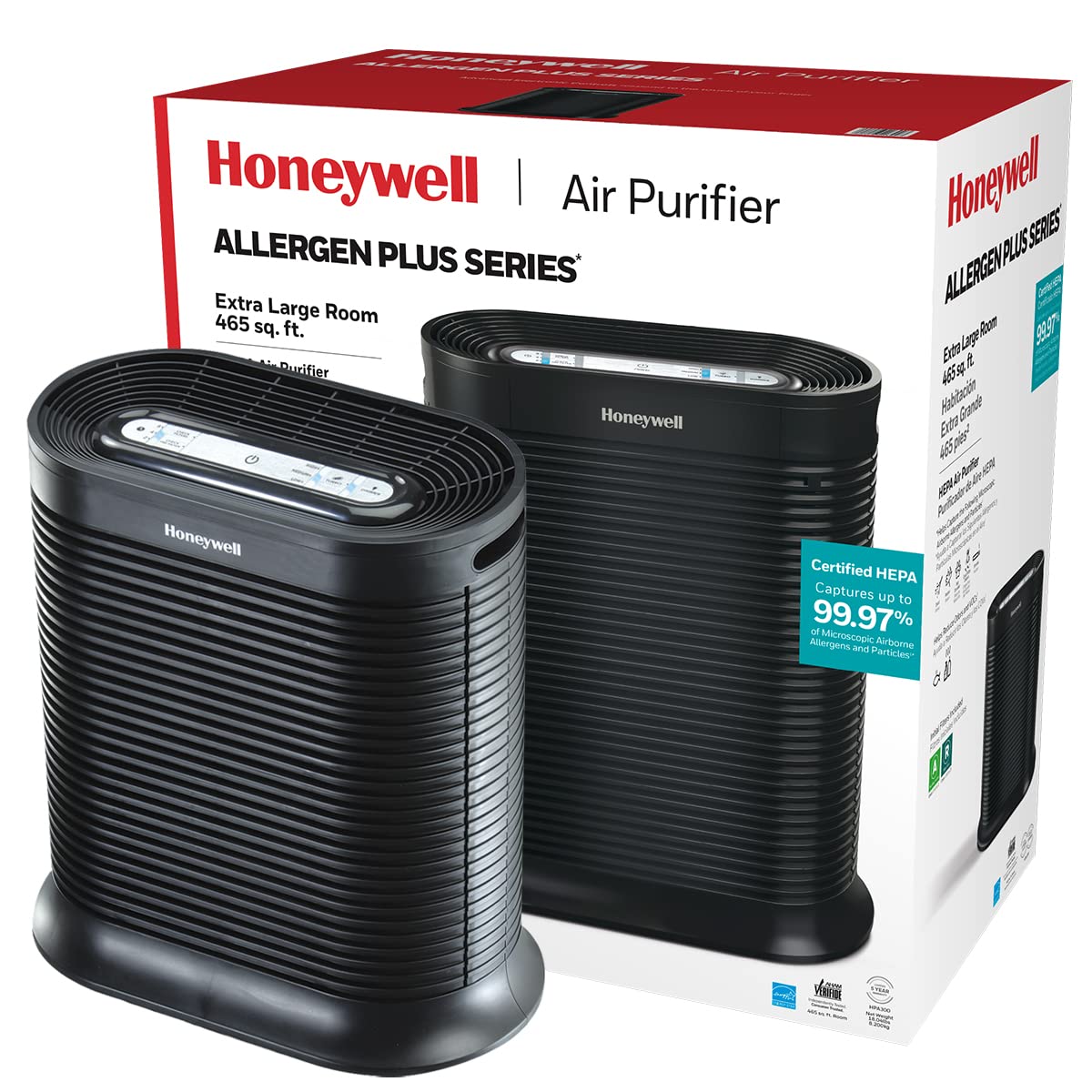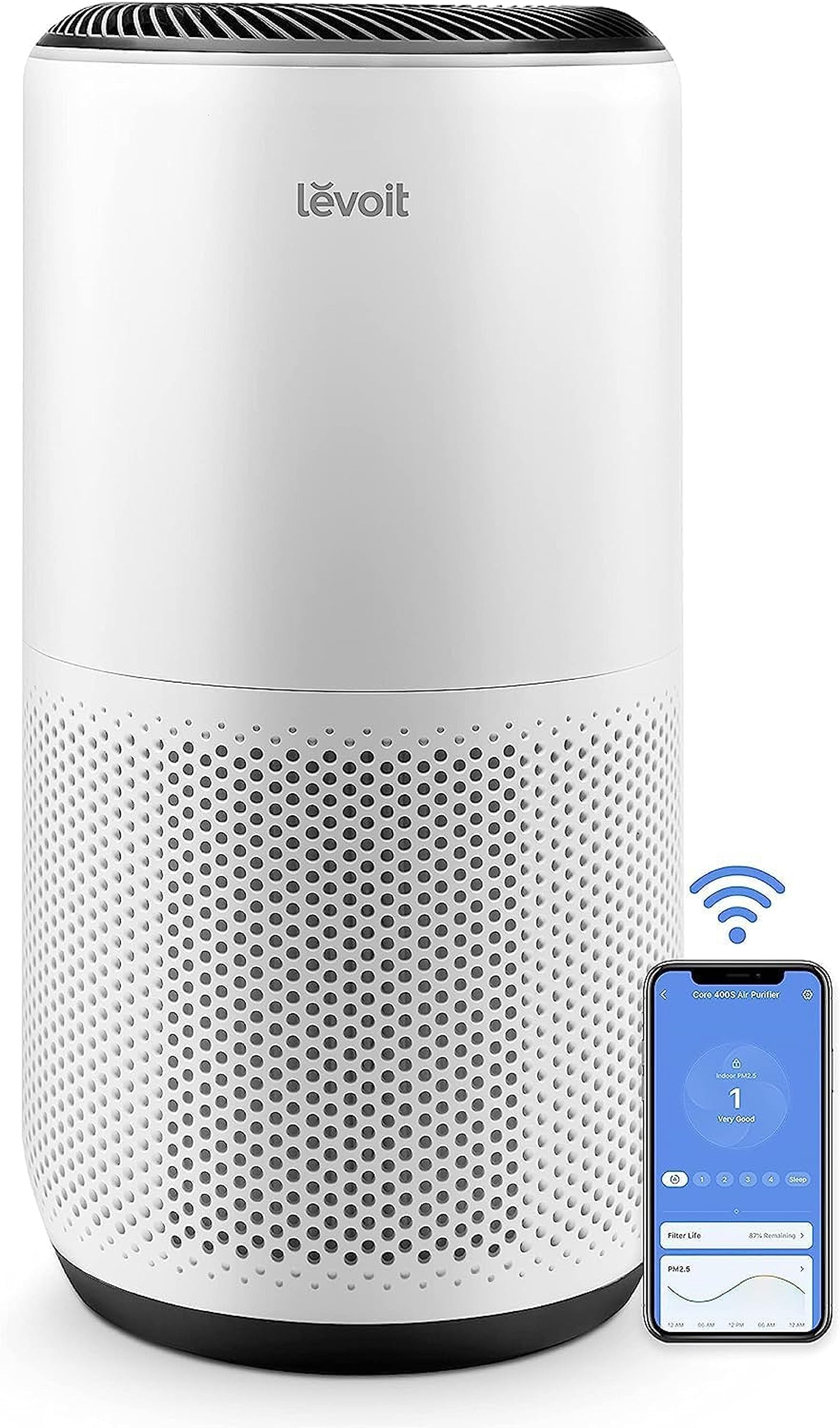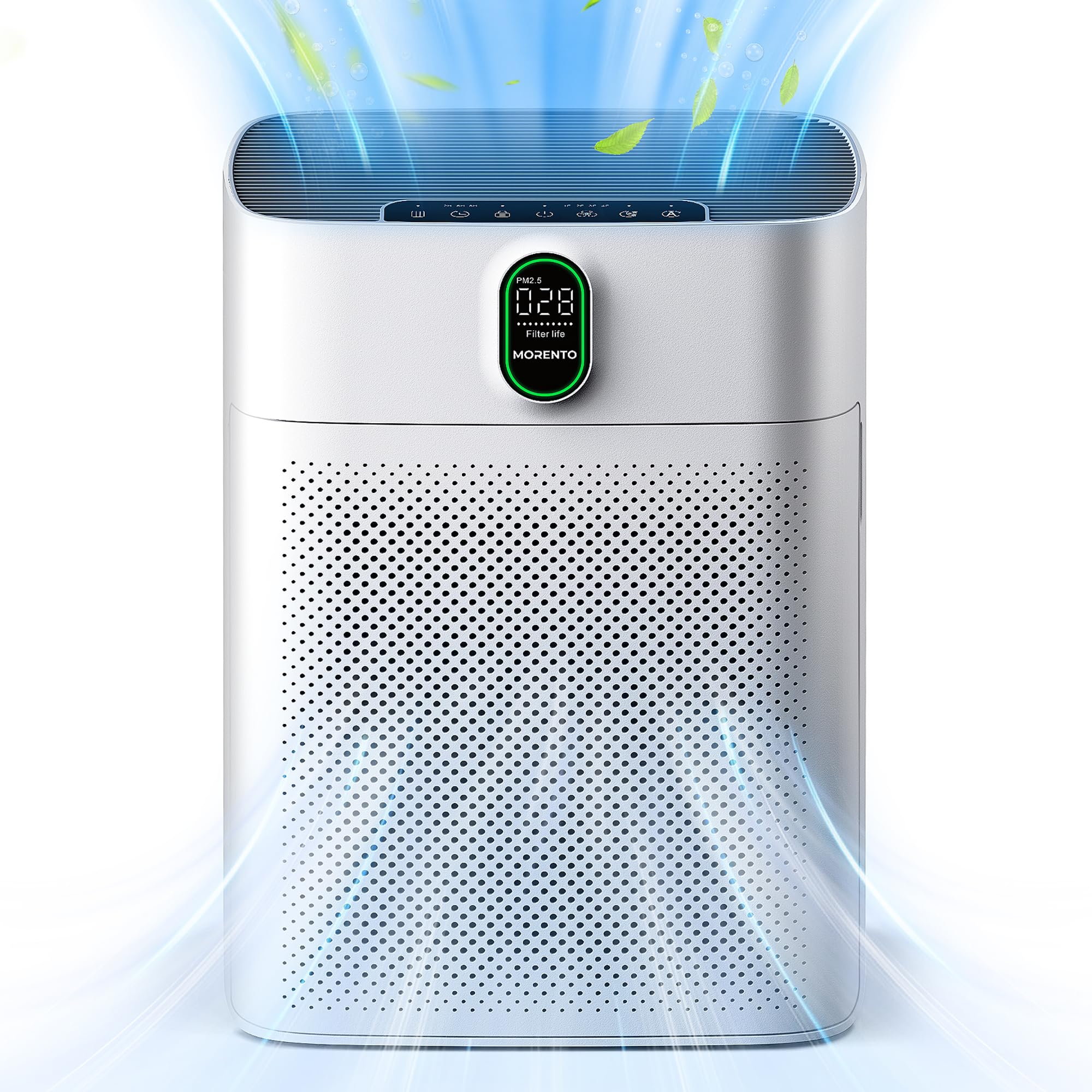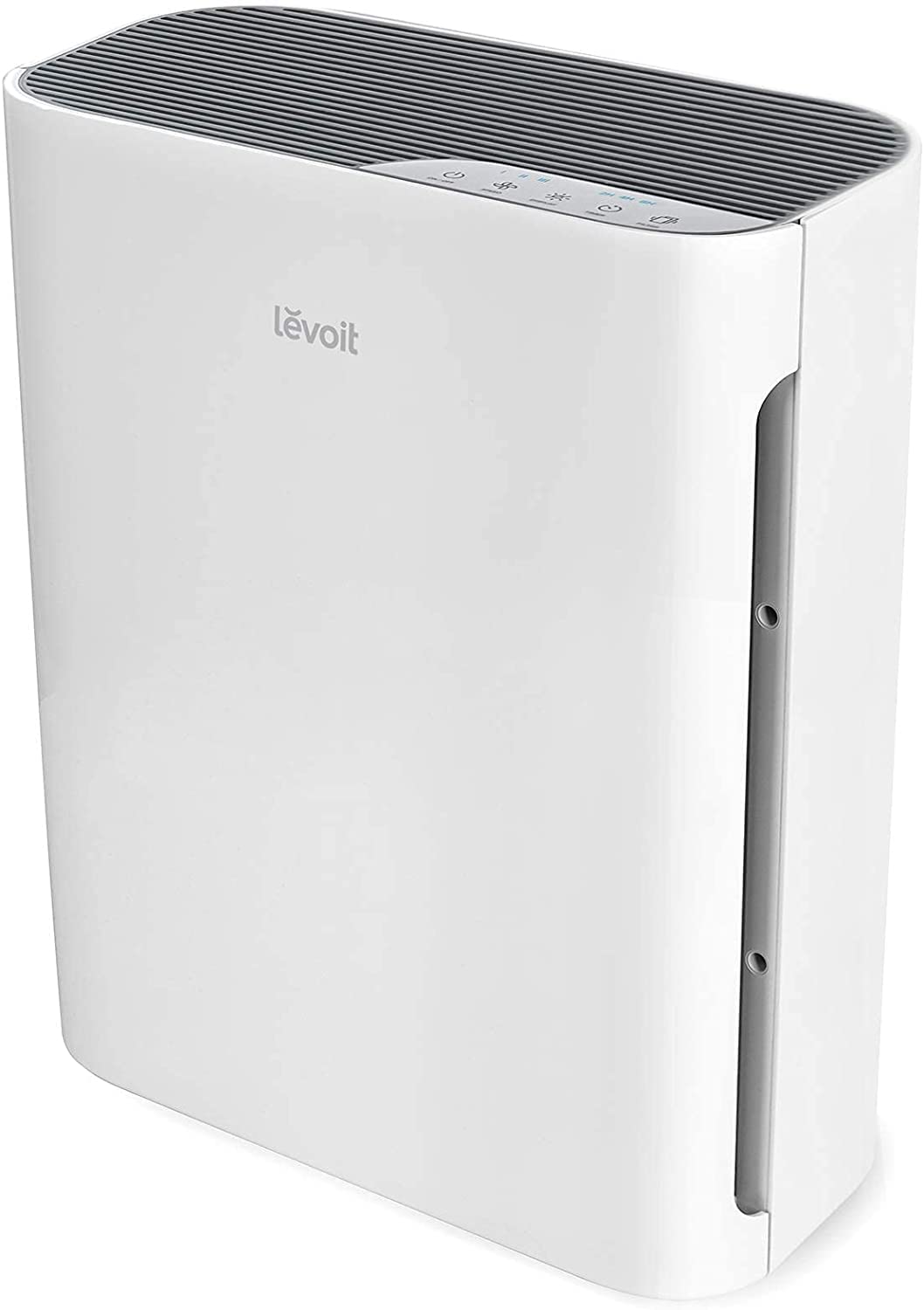Maintenance and Tips
Pure Enrichment Air Purifier How to Clean
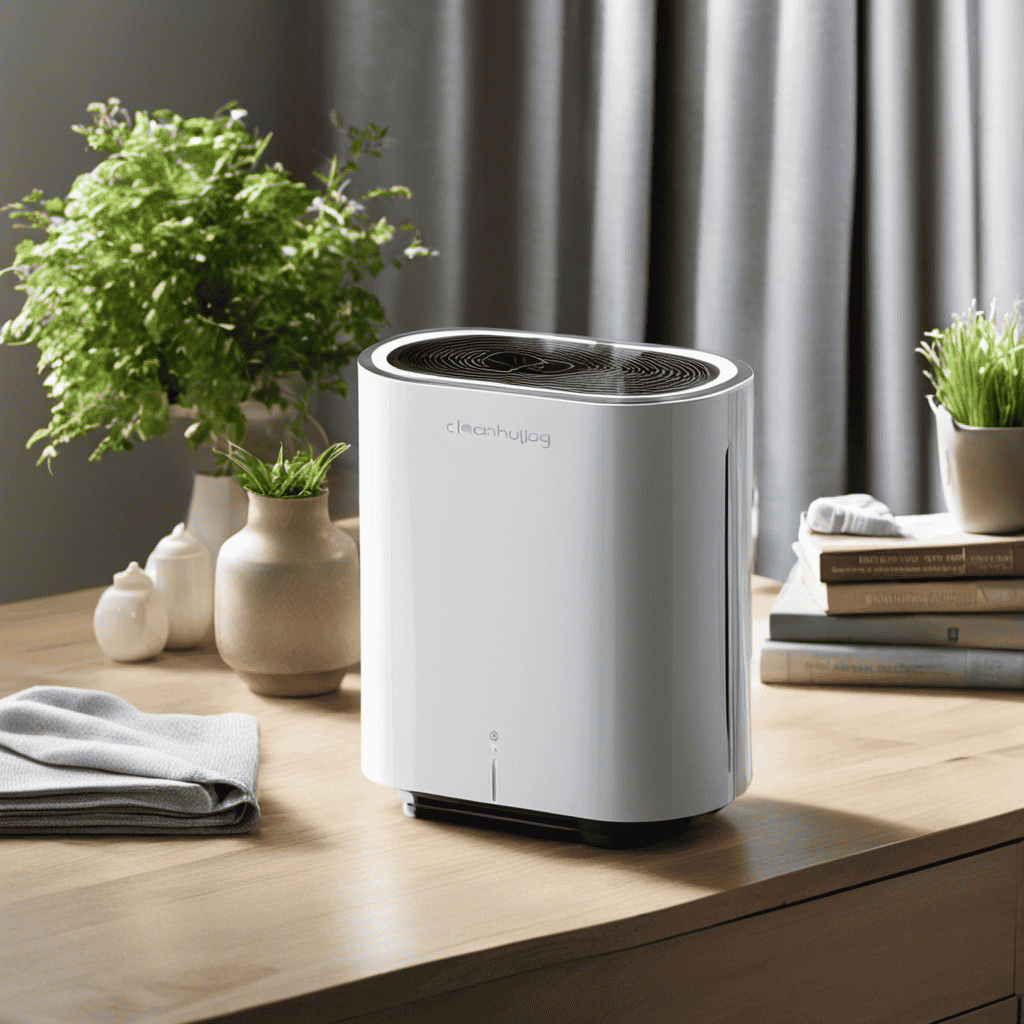
I have found the key to maintaining peak performance of my Pure Enrichment Air Purifier – consistent cleaning.
In this guide, I’ll walk you through the step-by-step process of giving your air purifier the TLC it deserves.
With just a few simple supplies and a little bit of time, you can ensure that your air purifier is operating efficiently and effectively.
So, let’s dive in and learn how to clean your Pure Enrichment Air Purifier like a pro.
Key Takeaways
- Regular cleaning is essential for maintaining the efficiency and effectiveness of the Pure Enrichment Air Purifier.
- Proper cleaning helps to improve air quality by removing dust, pollen, and other particles that can clog filters.
- Cleaning the exterior of the air purifier is important for maintaining its efficiency and prolonging its lifespan.
- Regular maintenance and evaluation of the air purifier’s components and performance are necessary for optimal functioning.
Importance of Regular Cleaning
Regular cleaning is essential for maintaining the efficiency of your Pure Enrichment air purifier. Proper air purifier maintenance ensures that the device continues to function effectively and provide you with clean, fresh air.
To keep your air purifier in top shape, follow these cleaning tips. First, start by unplugging the unit and removing the filter. Gently vacuum the filter to remove any loose debris. If the filter is washable, rinse it with water and let it dry completely before reinstalling it.
Next, wipe down the exterior of the air purifier with a soft cloth dampened with mild soap and water. Be sure to clean the air vents and grilles as well.
Regular cleaning not only improves the performance of your air purifier but also prolongs its lifespan, ensuring you can enjoy clean air for years to come.
Gather Necessary Cleaning Supplies
Make sure you have all the necessary cleaning supplies before you start. To properly maintain your air purifier and ensure its optimal performance, follow these cleaning tips:
-
Microfiber cloth: Use a soft, lint-free cloth to wipe down the exterior of the air purifier. This will remove any dust or dirt that has accumulated on the surface.
-
Vacuum cleaner: Use the brush attachment on your vacuum to clean the intake vents and remove any trapped debris. This will help improve the air flow and prevent clogs.
-
Water and mild detergent: For removable filters, gently wash them in a solution of warm water and mild detergent. Rinse thoroughly and allow them to air dry completely before reinstalling.
-
Compressed air: Use a can of compressed air to blow out any dust or particles from hard-to-reach areas, such as the fan blades or internal components.
By gathering these cleaning supplies, you will be equipped to effectively maintain your air purifier.
Now, let’s move on to the next step: turning off and unplugging the air purifier.
Turn off and Unplug the Air Purifier
When it comes to cleaning an air purifier, it’s crucial to use proper cleaning techniques to ensure optimal performance and longevity. Regular cleaning not only helps maintain the efficiency of the air purifier but also promotes a healthier indoor environment by removing dust, allergens, and other pollutants.
Proper Cleaning Techniques
To effectively clean your Pure Enrichment air purifier, it’s important to follow proper cleaning techniques. Here are some effective cleaning methods you can use:
-
Remove the front panel: Gently pull the front panel away from the air purifier to access the filters.
-
Vacuum the filters: Use a handheld vacuum or a brush attachment to remove dust and debris from the filters.
-
Wash the filters: If your air purifier has washable filters, rinse them with water and mild soap. Allow them to dry completely before reinstalling.
-
Wipe down the exterior: Use a soft, damp cloth to clean the exterior of the air purifier, removing any fingerprints or smudges.
By following these proper cleaning techniques, you can ensure that your Pure Enrichment air purifier continues to operate effectively and efficiently.
Regular cleaning not only improves the air quality in your home but also extends the lifespan of your air purifier.
Benefits of Regular Cleaning
Regularly cleaning your air purifier not only improves the quality of the air in your home but also helps extend its lifespan. By performing regular maintenance on your air purifier, you can ensure that it continues to operate at its optimal level, providing you with clean and fresh air.
One of the key benefits of regular cleaning is the removal of accumulated dust, pollen, and other particles that can clog the filters and hinder the purifier’s performance. This allows the purifier to effectively capture and eliminate airborne contaminants, improving the overall air quality in your home.
Additionally, regular cleaning helps prevent the growth of mold and bacteria within the purifier, which can cause unpleasant odors and potentially harm your health. By extending the lifespan of your air purifier through regular maintenance, you can continue to enjoy its benefits for years to come.
Speaking of maintenance, one important step is to remove and clean the pre-filter.
Remove and Clean the Pre-Filter
First, you’ll need to unplug the Pure Enrichment air purifier and locate the pre-filter. Proper pre-filter maintenance is crucial for ensuring optimal performance and longevity of your air purifier. Here’s a step-by-step guide to removing and cleaning the pre-filter:
- Carefully remove the front panel of the air purifier by sliding it upwards or unlatching the clips.
- Locate the pre-filter, usually positioned in front of the main filter, and gently remove it.
- Shake off any loose particles from the pre-filter outdoors or over a trash can.
- Rinse the pre-filter under running water to remove any remaining debris.
By following these steps, you can effectively remove pre-filter particles and maintain the efficiency of your air purifier.
Now, let’s move on to the next section and learn how to clean the activated carbon filter.
Clean the Activated Carbon Filter
Now that we have successfully removed and cleaned the pre-filter, let’s move on to the next step in maintaining our Pure Enrichment air purifier – cleaning the activated carbon filter.
The activated carbon filter plays a crucial role in eliminating odors and capturing larger particles from the air. To ensure its optimal performance, regular cleaning is essential.
To clean the activated carbon filter, start by gently removing it from the air purifier unit. Avoid using excessive force to prevent any damage. Next, use a soft brush or a vacuum cleaner with a brush attachment to remove any visible dust or debris. Be thorough but gentle to avoid puncturing the filter.
For deeper cleaning, you can also rinse the activated carbon filter with water. However, it is important to follow the manufacturer’s guidelines as some filters may not be water-safe. Allow the filter to dry completely before reinstalling it into the air purifier unit.
Clean the HEPA Filter
To maintain optimal performance, it’s important to regularly clean the HEPA filter. Gently remove it from the unit and use a soft brush or vacuum cleaner to remove dust and debris. Cleaning the HEPA filter ensures that your Pure Enrichment air purifier continues to function efficiently and prolongs the filter’s lifespan.
Here are some important steps to follow when cleaning the HEPA filter:
- Turn off the air purifier and unplug it from the power source.
- Carefully remove the HEPA filter from the unit, following the manufacturer’s instructions.
- Use a soft brush or a vacuum cleaner with a brush attachment to gently remove any accumulated dust and debris from the filter.
- Once the filter is clean, reinsert it into the air purifier and secure it properly.
Cleaning the Ionizer (If Applicable
Proper maintenance of the ionizer is crucial to ensure optimal performance and longevity. Regular cleaning techniques for the ionizer are necessary to remove accumulated dirt, dust, and other contaminants that can hinder its effectiveness.
The benefits of regular cleaning include improved air quality, increased ion production, and a longer lifespan for the ionizer.
Proper Ionizer Maintenance
Make sure you regularly clean the ionizer to maintain its proper functionality. Neglecting proper maintenance can lead to reduced performance and potential issues with your air purifier. Here are some important ionizer cleaning techniques to keep in mind:
-
Turn off the air purifier and unplug it from the power source before cleaning the ionizer. This ensures your safety and prevents any electrical damage.
-
Gently remove the ionizer plates or filters from the unit according to the manufacturer’s instructions. These components may accumulate dust and pollutants over time.
-
Use a soft brush or cloth to gently clean the ionizer plates or filters. Avoid using harsh chemicals or abrasive materials that could damage the delicate surfaces.
-
Once cleaned, reinsert the ionizer plates or filters back into the unit securely. Make sure they are properly aligned and seated to ensure optimal performance.
Cleaning Techniques for Ionizer
When cleaning your ionizer, make sure to follow the manufacturer’s instructions for gently removing and cleaning the ionizer plates or filters. Proper ionizer care is essential to maintain its efficiency and effectiveness in purifying the air.
Effective ionizer cleaning techniques involve regular maintenance to prevent the build-up of dirt, dust, and other particles that can accumulate on the plates or filters over time. One important step is to disconnect the power source and unplug the ionizer before cleaning.
Use a soft cloth or brush to gently wipe the plates or filters, being careful not to damage or bend them. If necessary, you can also use mild soap and water to clean the plates or filters, but make sure to rinse them thoroughly and allow them to dry completely before reassembling the ionizer.
Following these proper cleaning techniques will ensure that your ionizer continues to function optimally and provide you with clean, fresh air.
Benefits of Regular Cleaning
To maintain optimal efficiency, it’s important for you to regularly clean your ionizer according to the manufacturer’s instructions. Here are the benefits of regular maintenance and reasons for cleaning regularly:
Improved Air Quality: Cleaning your ionizer regularly helps remove dust, allergens, and pollutants from the air, ensuring cleaner and healthier air to breathe.
Longer Lifespan: Regular cleaning prevents the build-up of dirt and debris on the ionizer’s components, reducing the risk of damage and extending its lifespan.
Enhanced Performance: By removing accumulated particles, regular maintenance allows the ionizer to function at its best, ensuring maximum air purification and ionization capabilities.
Cost Savings: A well-maintained ionizer operates more efficiently, consuming less energy and reducing electricity costs in the long run.
Regular cleaning is crucial to enjoy these benefits and ensure that your ionizer continues to provide you with clean and fresh air.
Cleaning the UV-C Light (If Applicable
It’s important to regularly clean the UV-C light in your Pure Enrichment air purifier, if applicable. Proper UV-C light maintenance ensures optimal performance and longevity of the device.
To clean the UV-C light, start by unplugging the air purifier and removing the filter. Locate the UV-C light, usually housed in a separate compartment. Gently remove the UV-C light bulb by twisting it counterclockwise.
Use a soft, dry cloth to wipe away any dust or debris from the surface of the bulb. Avoid touching the bulb directly with your fingers as oils from your skin can damage it. Once clean, carefully reinsert the UV-C light bulb, making sure it is securely in place.
Reinstall the filter and plug in the air purifier. Regularly cleaning the UV-C light will help maintain the effectiveness of your Pure Enrichment air purifier.
Cleaning the Fan and Vents
When it comes to maintaining your fan, proper maintenance is key to ensure optimal performance.
One important aspect is clearing clogged vents, as they can restrict airflow and affect the efficiency of the fan.
However, cleaning the fan without disassembly is also possible and can be done with the right tools and techniques.
Proper Fan Maintenance
Regular fan maintenance is essential for keeping your Pure Enrichment air purifier clean and functioning properly. Here are some key cleaning techniques to ensure your fan stays in top condition:
-
Dusting: Use a soft brush or cloth to gently remove dust and debris from the fan blades. Be careful not to bend or damage the blades.
-
Vacuuming: Use a vacuum cleaner with a brush attachment to remove dust from the fan motor and vents. This will help prevent clogs and ensure proper airflow.
-
Wiping: Use a damp cloth to wipe down the exterior of the fan, including the control panel and display. Avoid using harsh chemicals that could damage the surface.
-
Filter Replacement: Regularly check and replace the air purifier’s filter according to the manufacturer’s instructions. This will help maintain optimal performance and ensure clean air circulation.
Clearing Clogged Vents
To clear clogged vents, you can use a vacuum cleaner with a brush attachment to remove dust and debris from the vents. This method is effective in clearing dust accumulation and preventing filter blockage in your Pure Enrichment air purifier.
The brush attachment allows for a thorough cleaning, reaching deep into the vents to dislodge any stubborn debris. Start by turning off and unplugging the air purifier to ensure safety. Attach the brush attachment to the vacuum cleaner and gently run it along the surface of the vents, applying light pressure to dislodge any dust or debris. Be sure to cover all the vents, including the intake and exhaust vents.
Once you have finished, check the vents to ensure they are clear of any blockage. Regularly cleaning the vents will optimize the performance of your air purifier and ensure clean air circulation throughout your space.
Cleaning Without Disassembly
Using a vacuum cleaner with a brush attachment is an efficient method for clearing clogged vents without having to disassemble anything. Proper cleaning techniques play a crucial role in maintaining the performance and longevity of your Pure Enrichment air purifier. Regular cleaning not only ensures that the air purifier functions optimally but also helps improve indoor air quality.
Here are four key benefits of regular cleaning:
-
Enhanced Airflow: By removing dust and debris from the vents, you allow for better airflow, improving the effectiveness of the air purifier.
-
Increased Efficiency: Cleaning the vents prevents clogs and blockages, allowing the air purifier to operate at peak performance, effectively capturing pollutants.
-
Extended Lifespan: Regular cleaning prevents the accumulation of dirt and debris, which can cause damage to the internal components, prolonging the lifespan of your air purifier.
-
Improved Air Quality: By eliminating dust and allergens from the vents, regular cleaning helps maintain clean and healthy indoor air for you and your family.
Cleaning the Exterior of the Air Purifier
You’ll want to start by removing the exterior cover to access the air purifier’s filter. Cleaning the exterior of your air purifier is an important step to maintain its efficiency and prolong its lifespan. To effectively clean the exterior, you can use a variety of exterior cleaning techniques along with the right cleaning tools and supplies. Here’s a table that summarizes the recommended techniques, tools, and supplies for cleaning the exterior of your air purifier:
| Technique | Tools | Supplies |
|---|---|---|
| Wiping | Microfiber cloth | Mild soap |
| Dusting | Soft brush or cloth | Water |
| Vacuuming | Vacuum cleaner | All-purpose cleaner |
| Disinfecting | Disinfectant wipes | Rubbing alcohol |
Drying the Filters and Components
Now that we have cleaned the exterior of the air purifier, it’s time to focus on drying the filters and components. Proper drying techniques are essential to prevent mold growth and maintain the efficiency of the air purifier. Here are some steps to follow:
-
Remove the filters and gently shake off any excess water.
-
Place the filters on a clean, dry surface and allow them to air dry completely. Avoid using heat sources as they may damage the filters.
-
Wipe down the exterior and interior components of the air purifier with a clean, dry cloth.
-
Ensure all parts are thoroughly dry before reassembling the air purifier.
Reassembling the Air Purifier
To reassemble the air purifier, make sure all the components are thoroughly dry before putting them back together.
Proper reassembly is crucial to ensure the efficient functioning of your air purifier.
Start by carefully examining each component to ensure they are clean and free from any dust or debris.
Begin by reinstalling the filters, making sure they are securely in place.
Then, attach the front grille by aligning the tabs with the slots and gently pressing it into position.
Next, reattach the back cover, ensuring all the screws are tightly fastened.
Finally, plug in the power cord and turn on the air purifier to check if it is working properly.
If you encounter any issues during the reassembly process, refer to the troubleshooting tips in the user manual or contact customer support for assistance.
Testing the Air Purifier After Cleaning
After reassembling the air purifier, it’s important to test its performance. This will help ensure air quality improvement and evaluate the effectiveness of the cleaning process.
To assess the air quality improvement, I’ll use a particle counter. This device measures the concentration of airborne particles before and after running the air purifier. It provides quantitative data on how well the purifier is working.
In addition to using the particle counter, I’ll also conduct a visual inspection. This will allow me to check for any dust or debris that may have been missed during the cleaning process. It’s important to make sure that all areas of the purifier are clean and free from any obstructions.
Air Quality Improvement
Improving air quality can be achieved by using a Pure Enrichment air purifier. Here are some tips for maintaining your air purifier and improving indoor air quality:
-
Regularly clean or replace the filters: The filters in your air purifier trap dust, allergens, and pollutants, so it’s important to clean or replace them according to the manufacturer’s instructions.
-
Keep the air purifier in the right location: Place the air purifier in the area where you spend the most time, such as the bedroom or living room, to ensure maximum effectiveness.
-
Vacuum and dust frequently: Regularly vacuuming carpets and upholstery and dusting surfaces helps to minimize the amount of allergens and particles in your home.
-
Control humidity levels: High humidity can lead to mold growth, so use a dehumidifier in damp areas like the basement or bathroom.
By following these maintenance tips and incorporating these practices into your daily routine, you can significantly improve the air quality in your home.
With clean air being so vital for health and well-being, it’s important to regularly evaluate the cleaning effectiveness of your air purifier.
Cleaning Effectiveness Evaluation?
Evaluate the effectiveness of your air purifier by checking the filters and ensuring they are clean and functioning properly. To measure the cleaning effectiveness of your air purifier, you can use various evaluation techniques.
One effective technique is to visually inspect the filters for any dirt or debris buildup. If you notice a significant amount of dirt, it is a clear indication that the filters are doing their job.
Another technique is to measure the air quality before and after using the air purifier. This can be done using a particle counter or an air quality monitor. By comparing the measurements, you can determine the level of improvement in air quality.
Additionally, you can also consider conducting an odor test to assess the purifier’s ability to eliminate unpleasant smells.
These evaluation techniques will help you determine the efficiency of your air purifier in cleaning the air and maintaining a healthy indoor environment.
Cleaning Maintenance Schedule
To keep your Pure Enrichment air purifier performing at its best, make sure you clean it regularly according to the maintenance schedule. Cleaning frequency and following best cleaning practices are crucial for maintaining the efficiency and longevity of your air purifier.
Here are some important steps to ensure proper cleaning:
- Check the maintenance schedule provided by Pure Enrichment to determine the recommended cleaning frequency.
- Turn off and unplug the air purifier before cleaning.
- Use a soft, damp cloth to gently wipe the exterior surfaces of the purifier.
- Clean the filters as instructed in the user manual, which may involve rinsing, vacuuming, or replacing them.
By adhering to the recommended cleaning frequency and following these best practices, you can ensure that your Pure Enrichment air purifier continues to provide clean and healthy air for your home.
Now, let’s move on to troubleshooting common cleaning issues.
Troubleshooting Common Cleaning Issues
Now that we have discussed the cleaning maintenance schedule for the Pure Enrichment air purifier, let’s move on to troubleshooting common cleaning issues that may arise.
One common issue is filter problems. If you notice a decrease in air quality or the purifier not working efficiently, it could be due to a clogged or dirty filter. To troubleshoot this, remove the filter and inspect it for any visible dirt or debris. If necessary, clean the filter according to the manufacturer’s instructions.
Another issue that may arise is cleaning difficult to reach areas. The Pure Enrichment air purifier is designed to be easily cleaned, but there may be areas that are hard to reach. In such cases, use a soft-bristle brush or a vacuum cleaner with a brush attachment to remove any dirt or dust from these areas. Be careful not to damage any delicate parts while cleaning.
Frequently Asked Questions
Can I Clean the Air Purifier With Just Water, or Do I Need to Use Any Specific Cleaning Solutions?
I can clean the air purifier with just water, but it’s recommended to use specific cleaning solutions for better results. Regular cleaning is essential to maintain its performance and prolong its lifespan.
How Often Should I Clean the Filters of the Air Purifier?
I clean the filters of my air purifier regularly to ensure optimal performance. It’s important to follow the best practices for maintaining air purifier filters, including using specific cleaning solutions and not just water.
Is It Necessary to Clean the Exterior of the Air Purifier Regularly, or Can I Focus Only on the Internal Components?
Regular cleaning of the exterior of an air purifier is necessary to maintain its efficiency and appearance. While internal components play a crucial role in filtration, neglecting external cleaning can lead to dust accumulation and hinder performance.
Can I Use a Vacuum Cleaner to Clean the Vents and Fan of the Air Purifier?
Yes, a vacuum cleaner can be used to clean the vents and fan of the air purifier. However, it is important to follow the manufacturer’s instructions and consider alternative cleaning methods for delicate components.
What Should I Do if the Air Purifier Emits an Unpleasant Odor After Cleaning?
If my air purifier emits an unpleasant odor after cleaning, I would first check the filter for any leftover debris. If that doesn’t solve the issue, I might consider replacing the filter or contacting customer support for further assistance. As for maintaining air purifier performance, regular filter replacements and keeping the unit clean are key.
Conclusion
In conclusion, cleaning your Pure Enrichment air purifier is a simple yet essential task that ensures optimal performance and longevity. By following the steps outlined in this guide, you can easily maintain a clean and healthy indoor environment.
Remember to gather your cleaning supplies, turn off and unplug the purifier, carefully clean the pre-filter and activated carbon filter, and reassemble the unit.
Regular cleaning and proper maintenance will guarantee that your air purifier continues to provide you with fresh, clean air for years to come. Happy cleaning!
In the dynamic world of air purifiers and clean air advocacy, Aire stands out as a beacon of knowledge and passion. As the Editor in Chief of Aero Guardians, Aire has been instrumental in shaping the platform’s voice and direction, ensuring that every piece of content resonates with clarity, authority, and authenticity.
Maintenance and Tips
How to Choose a Room Air Purifier

When it comes to ensuring clean air in my home, I aim to have the top-quality room air purifier. With numerous options available, it can be daunting to select the perfect one.
That’s why I’ve put together this guide on how to choose a room air purifier. I’ll walk you through understanding your air quality needs, considering room size and coverage area, evaluating different technologies, and more.
Let’s clear the air and find the perfect purifier for you.
Key Takeaways
- Understanding air quality needs and identifying specific pollutants helps select the right air purifier.
- Considerations for room size and coverage area are important when choosing an air purifier.
- Evaluate different types of air purification technologies to find the most suitable one.
- Consider noise level, energy efficiency, and maintenance requirements when selecting an air purifier.
Understanding Your Air Quality Needs
Understanding your air quality needs is essential when choosing a room air purifier. Air quality monitoring plays a crucial role in determining the type of purifier that will best suit your needs.
By monitoring the air quality in your home, you can identify specific pollutants or allergens that may be affecting your health. This knowledge allows you to select an air purifier with the appropriate filtration system to target those specific contaminants.
Moreover, investing in a high-quality air purifier can provide numerous health benefits. It helps remove harmful particles such as dust, pollen, pet dander, and mold spores from the air, reducing the risk of respiratory issues and allergies.
Breathing cleaner air can also improve overall well-being, leading to better sleep and increased productivity.
Consider the Room Size and Coverage Area
When it comes to choosing a room air purifier, it’s important to consider the size of the room and the coverage area of the purifier.
The room size is crucial because it determines the effectiveness of the purifier in cleaning the air.
Additionally, the coverage area is important because it indicates how much square footage the purifier can effectively clean.
Therefore, it’s essential to choose a purifier based on the dimensions of the room and the desired coverage area.
Room Size Importance
The size of the room is crucial when selecting an air purifier. It determines the effectiveness of the purifier in providing clean and fresh air. To choose the right air purifier based on room size, consider the square footage of the room and the air quality requirements.
| Room Size | Air Quality Requirements | Recommended Air Purifier |
|---|---|---|
| Small | Low to Moderate | Compact air purifier |
| Medium | Moderate to High | Medium-sized air purifier |
| Large | High | Large air purifier |
For smaller rooms, a compact air purifier is sufficient to maintain a healthy environment. In medium-sized rooms, a medium-sized air purifier is recommended to effectively remove allergens and pollutants. For larger rooms, a larger air purifier with higher filtration capacity is necessary to ensure optimal air quality. By selecting the right air purifier based on your room size and air quality requirements, you can create a healthier and cleaner living space.
Coverage Area Considerations
To effectively determine the coverage area of an air purifier, consider the square footage of the room and the desired level of air purification.
The size of the room is crucial as it directly affects the effectiveness of the purifier. A larger room will require a more powerful purifier to ensure optimal air quality. Additionally, the layout of the room and the placement of furniture can impact the air circulation.
It is important to choose a purifier that can effectively circulate the air in the room, reaching all corners and removing pollutants.
The desired level of air purification also plays a role in determining the coverage area. If you have severe allergies or respiratory conditions, you may require a purifier with a larger coverage area to ensure thorough purification.
Choosing Based on Dimensions
Consider the dimensions and layout of your space to ensure the purifier fits properly and circulates air effectively.
When choosing a room air purifier, it is important to take into account the size of the room. The purifier should be able to effectively clean the air in the entire space.
If the room is too large for the purifier’s coverage area, it may not be able to effectively remove pollutants and improve air quality. On the other hand, if the purifier is too large for the room, it may consume unnecessary energy and create a drafty environment.
It is recommended to check the manufacturer’s specifications for the purifier’s coverage area and compare it to the dimensions of your room to ensure a proper fit and optimal air purification.
Evaluating Different Types of Air Purification Technologies
When evaluating different types of air purification technologies, it’s important to understand their specific benefits and limitations. One of the key factors to consider is evaluating performance and comparing effectiveness.
Different technologies, such as HEPA filters, activated carbon filters, and ionizers, have their own strengths and weaknesses. HEPA filters are highly effective at capturing small particles but may not be as effective against odors and gases. Activated carbon filters excel at removing odors and gases, but may not be as effective at capturing smaller particles. Ionizers can effectively remove particles from the air but may produce ozone as a byproduct.
By understanding the strengths and limitations of each technology, you can choose the most suitable air purification technology for your specific needs.
Now, let’s move on to the next important factors to consider: noise level and energy efficiency.
Noise Level and Energy Efficiency
Understanding the noise level and energy efficiency of different air purification technologies can help you make a more informed decision. When considering which air purifier to choose, it’s important to take into account the noise level analysis and energy efficiency standards. Here are four key factors to consider:
-
Noise level: Some air purifiers can be quite noisy, especially on higher settings. Look for models with noise reduction features or low decibel ratings for a quieter operation.
-
Energy efficiency: Check the energy efficiency rating of the air purifier to ensure it won’t consume excessive electricity. Look for models with Energy Star certification for optimal energy savings.
-
Adjustable settings: Consider air purifiers with adjustable fan speeds or automatic modes to customize the noise level and energy usage based on your needs.
-
Sleep mode: Look for air purifiers with a sleep mode feature that operates at a lower noise level and consumes less energy during nighttime use.
Understanding the noise level and energy efficiency of air purifiers can help you find the right balance between effectiveness and convenience.
Now, let’s move on to comparing filter types and maintenance requirements.
Comparing Filter Types and Maintenance Requirements
Let’s take a look at the different filter types and maintenance requirements for air purifiers.
When it comes to comparing effectiveness, there are three main types of filters commonly used in air purifiers: HEPA filters, activated carbon filters, and ionizers.
HEPA filters are highly effective in capturing airborne particles as small as 0.3 microns.
Activated carbon filters are great for removing odors and chemicals from the air.
Ionizers work by releasing negatively charged ions that attach to airborne particles, making them heavy and causing them to fall to the ground.
As for maintenance requirements, most air purifiers require regular filter replacement.
HEPA filters typically need to be replaced every 6-12 months, while activated carbon filters and ionizers may need replacement every 3-6 months.
It is important to consider the filter replacement costs when choosing an air purifier to ensure that it fits within your budget.
Budgeting and Cost Considerations
When it comes to choosing a room air purifier, there are a few key points to consider.
First, think about price vs. performance. You want to ensure that you’re getting the best value for your money.
Next, consider the long-term maintenance costs, such as filter replacements. This can help you determine the overall cost of owning and operating the air purifier.
Lastly, take a look at the energy efficiency ratings. This will give you an idea of how much energy the purifier will consume, which can impact your electricity bills in the long run.
Price Vs. Performance
You should consider the trade-off between price and performance when choosing a room air purifier. It’s important to find a balance between the cost and the effectiveness of the purifier. Here are some factors to consider:
-
Price range: Determine your budget for an air purifier. Prices can vary greatly depending on the brand, features, and size of the unit. Consider how much you are willing to spend before making a decision.
-
Performance comparison: Look for air purifiers that have high CADR (Clean Air Delivery Rate) ratings. This indicates how efficiently the purifier can remove pollutants from the air. Compare the CADR ratings of different models to find the most effective one for your needs.
-
Filter replacement cost: Consider the ongoing cost of replacing filters. Some air purifiers have expensive filters that need to be replaced frequently, while others have more affordable options. Factor in the cost of filter replacements when evaluating the overall price of the purifier.
-
Energy efficiency: Check the energy consumption of the air purifier. Look for models with an Energy Star certification, as they are designed to be more energy-efficient and can save you money on your electricity bills.
Long-Term Maintenance Costs
Considering the ongoing expenses, it’s important to factor in the long-term maintenance costs of an air purifier. One significant aspect of maintenance is filter replacement. Depending on the model and usage, filters may need to be replaced every few months to a year. It’s crucial to estimate the lifespan of the filters to budget for future expenses. To give you an idea, here’s a table showcasing the estimated lifespan of common air purifier filters:
| Filter Type | Lifespan Estimation |
|---|---|
| Pre-filter | 3-6 months |
| HEPA filter | 6-12 months |
| Carbon filter | 6-12 months |
| UV-C bulb | 9-12 months |
Energy Efficiency Ratings
When it comes to maintaining an air purifier, there are a few key things to keep in mind.
Regular maintenance is important to ensure the device is working effectively and efficiently.
Here are some tips for air purifier maintenance:
-
Cleaning the filters: Most air purifiers have filters that need to be cleaned or replaced regularly. Follow the manufacturer’s instructions to ensure proper maintenance.
-
Checking the air quality sensors: Some air purifiers are equipped with air quality sensors that detect the level of pollutants in the air. It’s important to check these sensors and clean them if necessary to maintain accurate readings.
-
Dusting and vacuuming the unit: Dust and debris can accumulate on the surface of the air purifier, hindering its performance. Regularly dust and vacuum the unit to keep it clean.
-
Regularly inspecting and cleaning the fan: The fan in the air purifier helps to circulate the air. Make sure to inspect and clean the fan regularly to prevent any blockages.
Frequently Asked Questions
Can an Air Purifier Eliminate All Types of Pollutants From the Air?
An air purifier can effectively eliminate many types of pollutants from the air, such as dust, pollen, pet dander, and smoke. However, it may not be able to remove all pollutants, like certain gases or chemicals.
Are There Any Specific Air Purifiers Recommended for People With Allergies or Asthma?
As an expert, I recommend the best air purifiers for pet owners and those with allergies or asthma. The benefits of HEPA filters are immense for allergy sufferers, providing clean air and reducing symptoms.
How Often Should I Change the Filters in My Air Purifier?
I change the filters in my air purifier every 3-6 months. Regular filter changes ensure optimal performance and help remove pollutants from the air, providing the benefits of cleaner, healthier indoor air.
Can an Air Purifier Remove Odors From the Air?
Yes, an air purifier can remove odors from the air. It uses filters to trap and eliminate odor-causing particles, improving indoor air quality. This is one of the many benefits of using an air purifier.
Are There Any Air Purifiers That Can Be Controlled Remotely Through a Smartphone App?
Yes, there are air purifiers that can be controlled remotely through a smartphone app. This feature allows for convenient and easy control of the purifier from anywhere, providing benefits of remote control functionality.
Conclusion
In conclusion, choosing the right room air purifier requires careful consideration of several factors.
By understanding your air quality needs, evaluating the room size and coverage area, and comparing different types of air purification technologies, you can make an informed decision.
Don’t forget to take into account noise level and energy efficiency, as well as filter types and maintenance requirements.
Lastly, budgeting and cost considerations are important.
Remember, finding the perfect air purifier is like finding a breath of fresh air for your home.
Maintenance and Tips
How to Clean a Holmes Desk Air Purifier
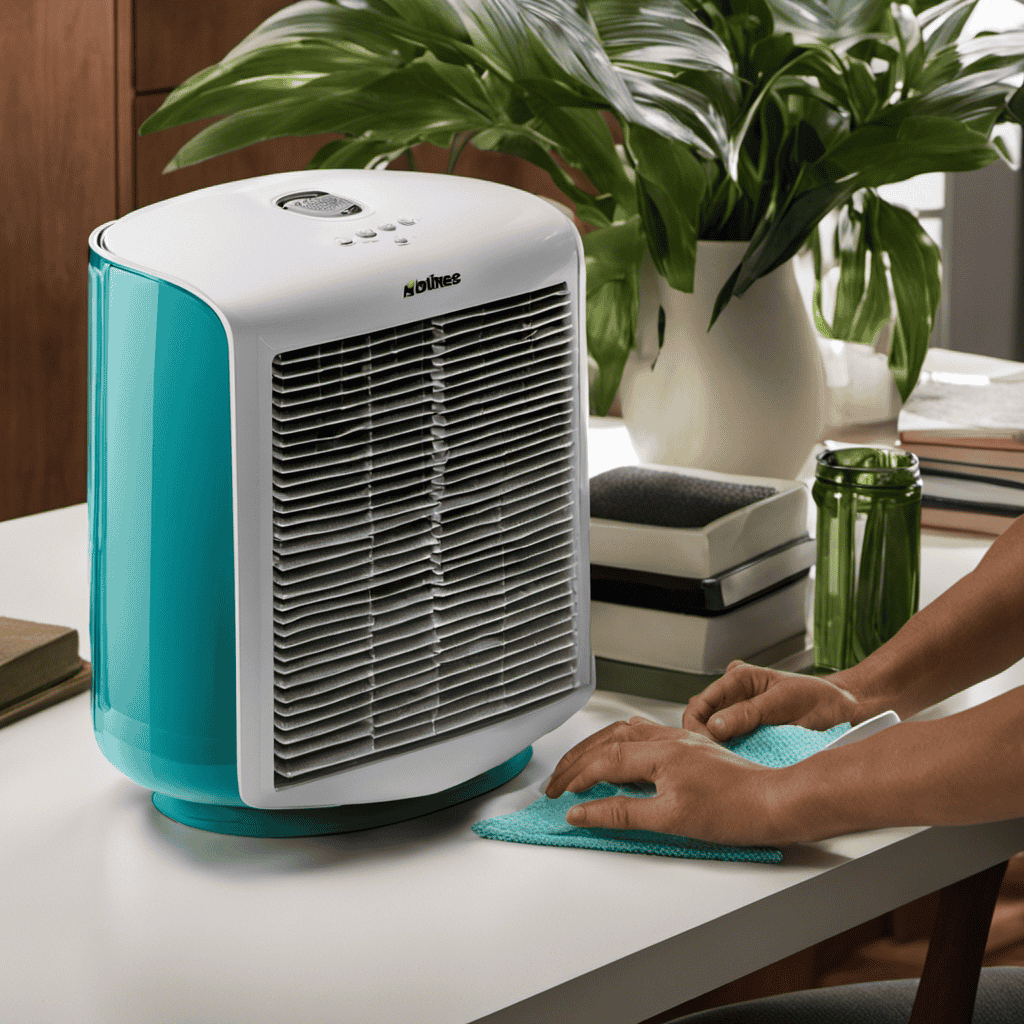
Sitting at my desk, enveloped in a cloud of dust and allergens, I find myself longing for fresher, cleaner air. Luckily, I have found the solution to refreshing my workspace – by cleaning my Holmes Desk Air Purifier.
In this article, I will guide you through the step-by-step process of rejuvenating your air purifier, ensuring it functions at its best.
So, let’s roll up our sleeves and embark on this journey to a healthier and more invigorating environment!
Key Takeaways
- Regular cleaning or replacement of the filter is essential for maintaining effectiveness.
- The pre-filter acts as the first line of defense, trapping larger particles.
- Proper filter maintenance is crucial for optimal air purification performance.
- Cleaning the exterior and maintaining the fan and motor helps prevent issues like reduced performance or overheating.
Understanding the Components of a Holmes Desk Air Purifier
To understand the components of your Holmes Desk Air Purifier, you’ll need to familiarize yourself with the filter, pre-filter, and control panel.
The filter is the main part of the purifier that captures and removes airborne particles such as dust, pollen, and pet dander. It is essential to clean or replace the filter regularly to maintain the purifier’s effectiveness.
The pre-filter, on the other hand, acts as the first line of defense, trapping larger particles before they reach the main filter. Understanding the functionality of the pre-filter helps in troubleshooting common issues like reduced airflow or foul odors.
Lastly, the control panel allows you to adjust settings such as fan speed and timer. Familiarizing yourself with these components will ensure proper maintenance and optimal performance of your Holmes Desk Air Purifier.
Preparing for the Cleaning Process
Before starting the cleaning process, make sure you’ve unplugged the device. This is a crucial step to ensure your safety and avoid any electrical hazards.
Now, let’s talk about the pre-cleaning steps you need to take before diving into cleaning your Holmes desk air purifier. Firstly, remove the front grill by gently pulling it towards you. Next, take out the filter and set it aside. It’s important to check if the filter needs to be replaced or can be reused after cleaning.
Now, let’s gather the necessary cleaning supplies. You’ll need a soft brush or cloth to remove dust and debris from the grill and filter. Additionally, mild soap or detergent and warm water will be required for cleaning the grill and filter thoroughly.
Removing and Cleaning the Air Filters
When it comes to maintaining air purifiers, proper filter maintenance is crucial. It ensures that the filters are working efficiently to remove pollutants from the air.
In this discussion, I will explore the various cleaning techniques for filters and the frequency at which they should be cleaned to maintain optimal performance.
Proper Filter Maintenance
Regular filter maintenance is important for keeping your Holmes desk air purifier working effectively. Neglecting filter maintenance can lead to reduced air purification performance and potential damage to your device.
Here are some key steps to ensure proper filter maintenance:
- Check the filter regularly for signs of dirt, dust, or debris buildup.
- Replace the filter according to the manufacturer’s recommendations to maintain optimal air quality.
- Troubleshoot common issues, such as a clogged filter, by gently cleaning it with a soft brush or vacuum cleaner.
- Keep spare filters on hand to minimize downtime during filter replacement.
Cleaning Techniques for Filters
To maintain optimal performance, make sure you regularly inspect and replace the filters in your Holmes desk air purifier. Cleaning techniques for filters are essential to ensure the longevity and efficiency of your purifier.
Begin by turning off and unplugging the device. Gently remove the filter from the unit, following the manufacturer’s instructions. If the filter is washable, rinse it under running water to remove dust and debris. Allow the filter to air dry completely before placing it back into the purifier.
For non-washable filters, use a soft brush or vacuum cleaner to remove any accumulated dirt or particles. It’s important to clean or replace the filters every three to six months, depending on usage and air quality.
Regular maintenance will help your Holmes desk air purifier function at its best, providing you with clean and fresh air.
Frequency of Filter Cleaning
When it comes to the frequency of filter cleaning for your Holmes desk air purifier, it is important to consider the manufacturer’s recommendations. In general, it is recommended to clean the filters every 2 to 3 months for optimal performance. However, this can vary depending on factors such as air quality and usage.
Regular maintenance is crucial to ensure that your air purifier continues to function effectively.
To clean the filters, you will need the following recommended cleaning products:
- Mild detergent: A gentle detergent will help remove dust and debris from the filters without causing any damage.
- Soft-bristle brush: This will help you gently scrub the filters and loosen any trapped particles.
- Vacuum cleaner: Use a vacuum with a brush attachment to remove loose dirt and debris from the filters.
- Microfiber cloth: This will be useful for wiping down the exterior of the air purifier and removing any dust or fingerprints.
Cleaning the Exterior of the Air Purifier
Cleaning the exterior of the air purifier is as simple as wiping it down with a damp cloth. However, it is important to use the right cleaning solutions and drying methods to ensure optimal performance and longevity of the device.
When choosing a cleaning solution, avoid harsh chemicals or abrasive cleaners that could damage the surface or affect the air quality. Instead, opt for mild soap and water or a solution of vinegar and water.
After wiping down the exterior, make sure to thoroughly dry the unit before plugging it back in to prevent any water damage. Taking these precautions will help maintain the air purifier and ensure it continues to operate effectively.
Moving on to maintaining the fan and motor…
Maintaining the Fan and Motor
Now that we have cleaned the exterior of the air purifier, let’s move on to maintaining the fan and motor. This is an important step in keeping your Holmes desk air purifier running efficiently.
Here are some key steps to follow:
- Regularly clean the fan blades to remove dust and debris buildup.
- Check the motor for any signs of damage or wear.
- Lubricate the motor bearings if necessary to ensure smooth operation.
- Inspect the airflow vents and filters for any blockages that may restrict the airflow.
By maintaining the airflow and troubleshooting common issues, you can prevent problems like reduced performance or overheating.
Now, let’s move on to reassembling and testing the Holmes desk air purifier to complete the cleaning process.
Reassembling and Testing the Holmes Desk Air Purifier
To put everything back together and make sure it’s working properly, you’ll need to reassemble and test the air purifier. Here are some reassembling tips to help you with this process.
First, refer to the user manual for specific instructions on how to reassemble the different components correctly. Take your time and be gentle to avoid any damage. Make sure all the parts fit snugly and securely.
Once you have reassembled the air purifier, it’s important to test it to ensure everything is functioning as it should. Common issues that may arise during testing include a noisy fan, weak airflow, or an error message on the display. Troubleshooting these issues can often be resolved by double-checking the assembly, cleaning the filters, or contacting customer support for further assistance.
Conclusion
In conclusion, cleaning a Holmes Desk Air Purifier is a simple yet essential task to ensure its efficiency and longevity. By understanding the components, preparing for the cleaning process, and following the steps to remove, clean, and maintain the air filters, exterior, fan, and motor, you can keep your air purifier in optimal condition.
Remember, a well-maintained air purifier is like a breath of fresh air, purifying your surroundings and creating a harmonious atmosphere. So, don’t neglect this important maintenance routine and enjoy clean and healthy air every day.
At Aero Guardians, where every piece of information aims to make the world a breath fresher, Samuela’s role as an author has been nothing short of transformative. With a penchant for weaving stories around the science of air purification, Samuela has enriched the platform with content that is both enlightening and captivating.
Maintenance and Tips
How to Change Filter on Bls12k Air Purifier
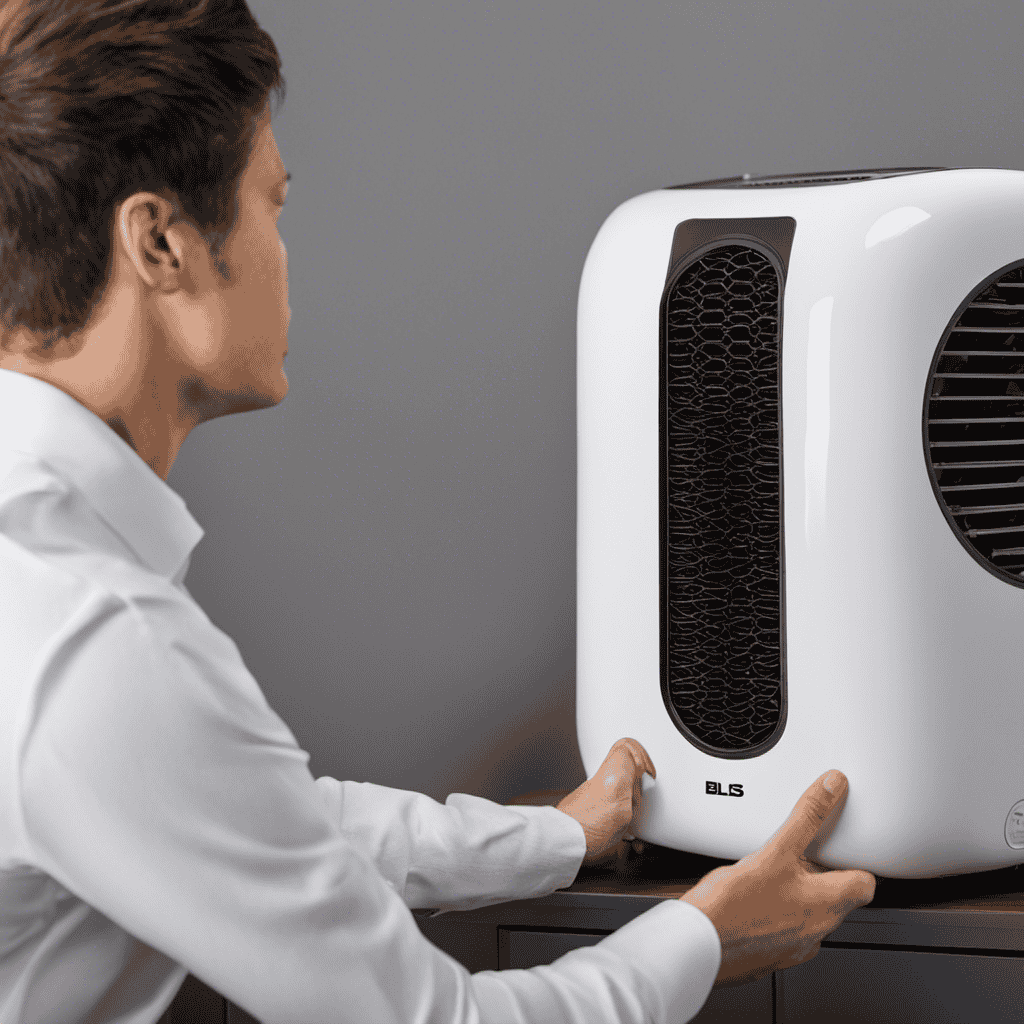
I will demonstrate the simplest method to replace the filter on your Bls12k air purifier. Believe me, you will be amazed at how easy it is!
With just a few tools and a little bit of know-how, you’ll have your air purifier running like new in no time. Follow my step-by-step guide and you’ll be breathing cleaner, fresher air before you know it.
So let’s get started and say goodbye to those pesky airborne particles once and for all!
Key Takeaways
- Proper maintenance and regular cleaning or replacement of the filter ensures optimal performance and cleaner air in your home.
- It is important to turn off and unplug the air purifier before performing any maintenance and to handle the filters carefully to avoid damage.
- Accessing the filter compartment involves locating the latch on the side of the device and gently pressing and holding it to release the compartment door.
- When removing the old filter, make sure to turn off and unplug the air purifier, gently pull out the filter from the sides, and dispose of it properly according to local regulations.
Tools Required for Filter Replacement
To change the filter on your BLS12K air purifier, you’ll need a screwdriver and a clean cloth. Proper maintenance is essential for prolonging the lifespan of your air purifier filters. Regularly cleaning or replacing the filters ensures optimal performance and cleaner air in your home.
When changing the filters, there are common mistakes that you should avoid. Firstly, make sure to turn off the air purifier and unplug it from the power source before attempting any maintenance. Secondly, handle the filters carefully to avoid any damage. Lastly, always follow the manufacturer’s instructions for the specific model of your air purifier.
These maintenance tips and common mistakes to avoid will help ensure smooth filter replacement and prevent any damage to your BLS12K air purifier. Now let’s move on to the step-by-step guide to accessing the filter compartment.
Step-by-Step Guide to Accessing the Filter Compartment
First, locate the latch on the side of the device to access the filter compartment. The latch is typically located towards the bottom of the air purifier.
Once you’ve found the latch, gently press and hold it to release the compartment door. It should open easily, revealing the filter inside.
If you’re having trouble locating the latch or if it’s not opening smoothly, try troubleshooting common filter issues by checking the user manual or contacting customer support.
Proper maintenance is crucial for prolonging filter life, so make sure to clean or replace the filter regularly according to the manufacturer’s instructions.
Now that you’ve accessed the filter compartment, let’s move on to the next step of removing the old filter safely.
Removing the Old Filter Safely
Once you’ve successfully accessed the filter compartment, you can safely remove the old filter. Here’s how to do it:
-
Turn off the air purifier and unplug it from the power source to ensure your safety.
-
Open the filter compartment carefully, following the instructions provided in the user manual specific to your BLS12K air purifier model.
-
Gently pull out the old filter, making sure to hold it from the sides to avoid touching the dirty surface.
-
Dispose of the old filter properly according to your local regulations. Some areas may have recycling programs for air filters, so look into that as an alternative option.
When disposing of old filters, it is important to consider alternative filter options. Look for filters that are eco-friendly, such as reusable or washable filters, which can help reduce waste and save money in the long run.
Installing the New Filter Correctly
When installing the new filter correctly, make sure to follow the specific instructions provided in the user manual for your BLS12K model. This will ensure that the filter is installed properly and functions effectively.
To prolong the lifespan of your air purifier, here are some tips to keep in mind.
Firstly, always handle the filter with clean hands to prevent any dirt or oil from transferring onto it.
Secondly, make sure to replace the filter regularly as recommended by the manufacturer. Neglecting to do so can lead to decreased performance and a shorter lifespan for the air purifier.
Lastly, avoid common mistakes such as forcing the filter into place or not properly aligning it with the filter housing.
Taking these precautions will help maintain the longevity and efficiency of your BLS12K air purifier.
Testing the Air Purifier After Filter Replacement
To ensure that the new filter replacement is working properly, you should test the air purifier by checking the airflow and monitoring any changes in the air quality. Here are some important points to consider during the testing process:
-
Check the airflow: After replacing the filter, turn on the air purifier and feel the airflow coming out of the unit. Make sure it is strong and consistent. Weak or uneven airflow could indicate a problem with the filter or the purifier itself.
-
Monitor air quality: Keep an eye on the air quality in the room where the purifier is located. If you notice a significant improvement in the air quality, such as reduced dust or odors, it indicates that the new filter is effectively capturing pollutants.
-
Regular maintenance: Regularly testing the air purifier after filter replacement is crucial for maintaining its efficiency and effectiveness. It ensures that the purifier is working optimally to keep the air clean and healthy.
-
Signs for filter replacement: Common signs that indicate a need for filter replacement include reduced airflow, increased noise, and persistent odors or allergens in the air. Regularly monitoring these signs can help you determine when it is time to replace the filter.
By following these testing guidelines, you can ensure that your air purifier is functioning properly and providing clean, fresh air for your space.
Remember the importance of regular air purifier maintenance to prolong its lifespan and maintain optimal performance.
Conclusion
In conclusion, changing the filter on the BLS12K air purifier is a simple and crucial maintenance task.
By following the step-by-step guide and using the necessary tools, you can easily access the filter compartment, remove the old filter safely, and install the new filter correctly.
Don’t forget to test the air purifier after the replacement to ensure it is working effectively.
Remember, proper filter maintenance is essential for maintaining clean and fresh indoor air.
So, take charge of your air quality and keep your BLS12K air purifier running smoothly.
In the dynamic world of air purifiers and clean air advocacy, Aire stands out as a beacon of knowledge and passion. As the Editor in Chief of Aero Guardians, Aire has been instrumental in shaping the platform’s voice and direction, ensuring that every piece of content resonates with clarity, authority, and authenticity.
-
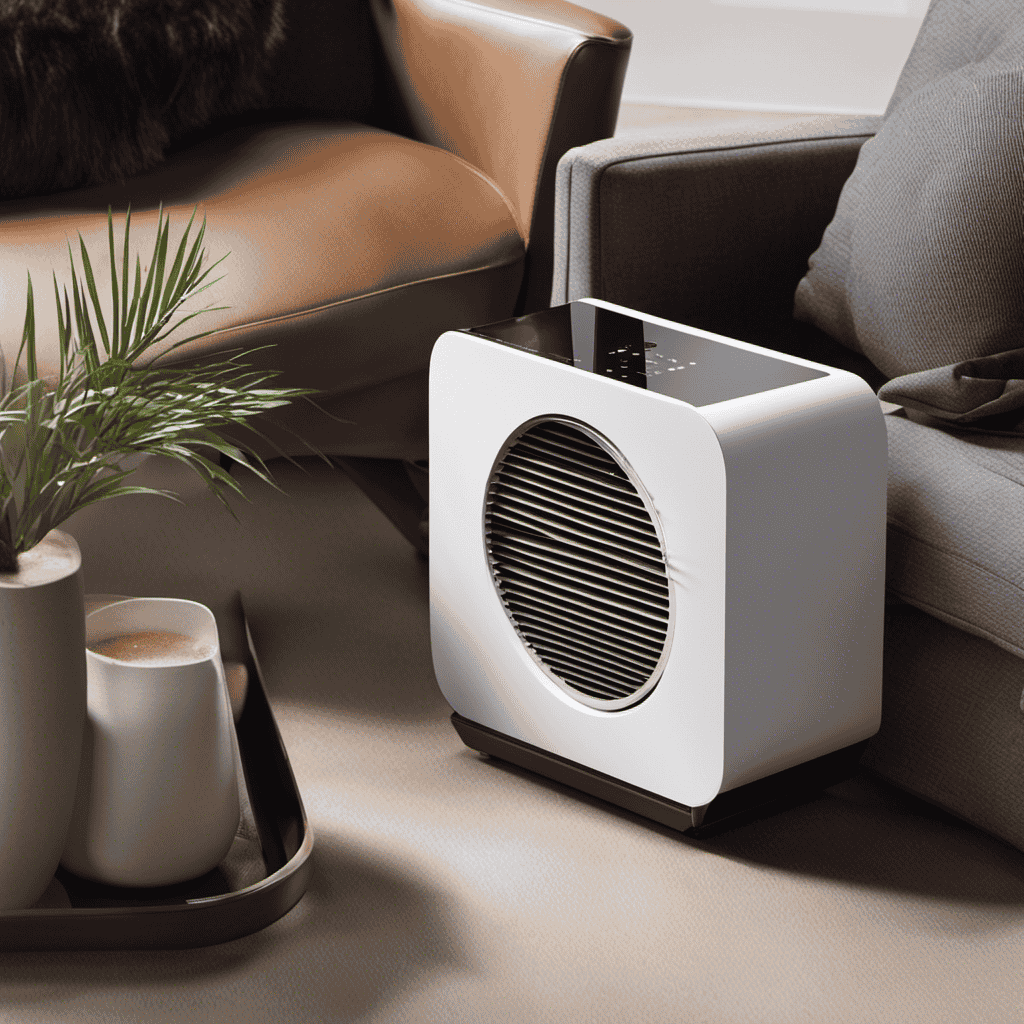
 Air Purifier Guides9 months ago
Air Purifier Guides9 months agoHow to Reset Filter on Miko Air Purifier
-
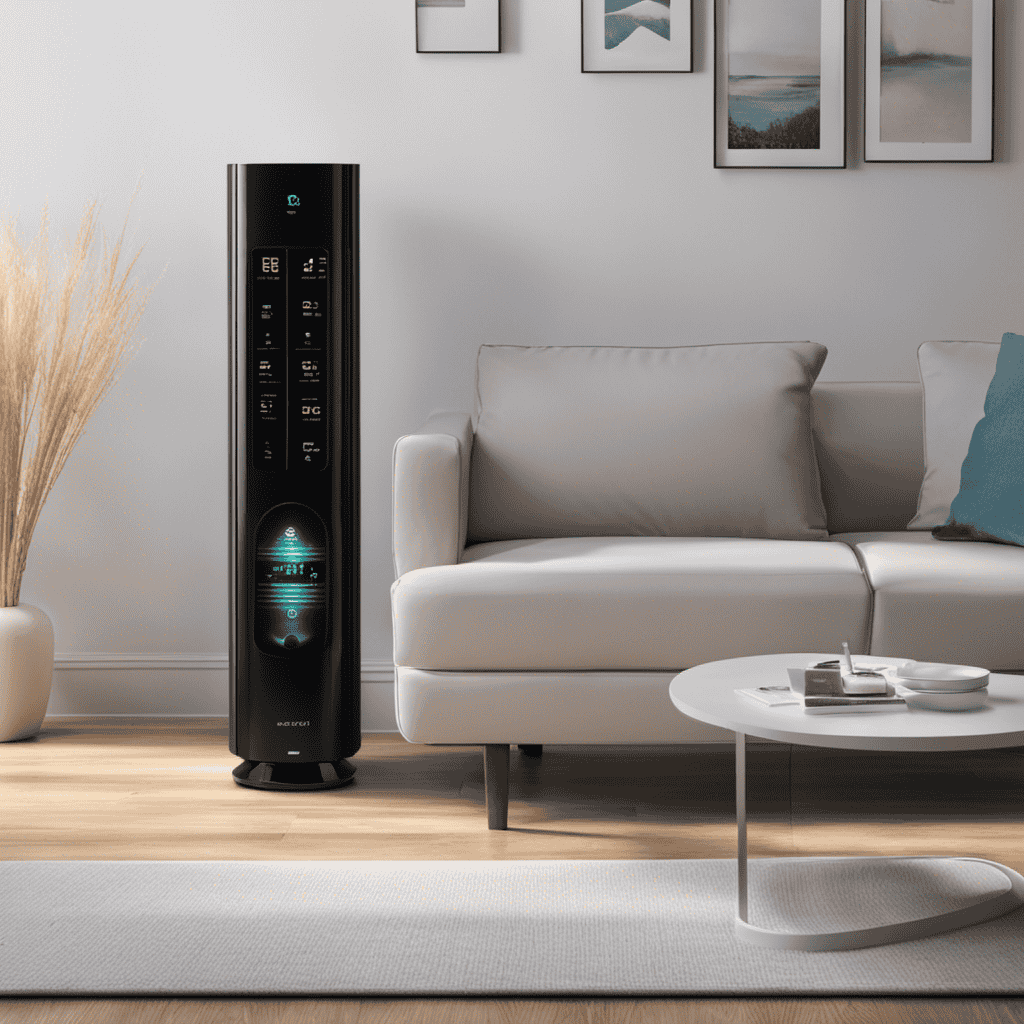
 FAQs - Advanced Queries6 months ago
FAQs - Advanced Queries6 months agoWhat Do the Numbers on My Air Purifier Mean
-
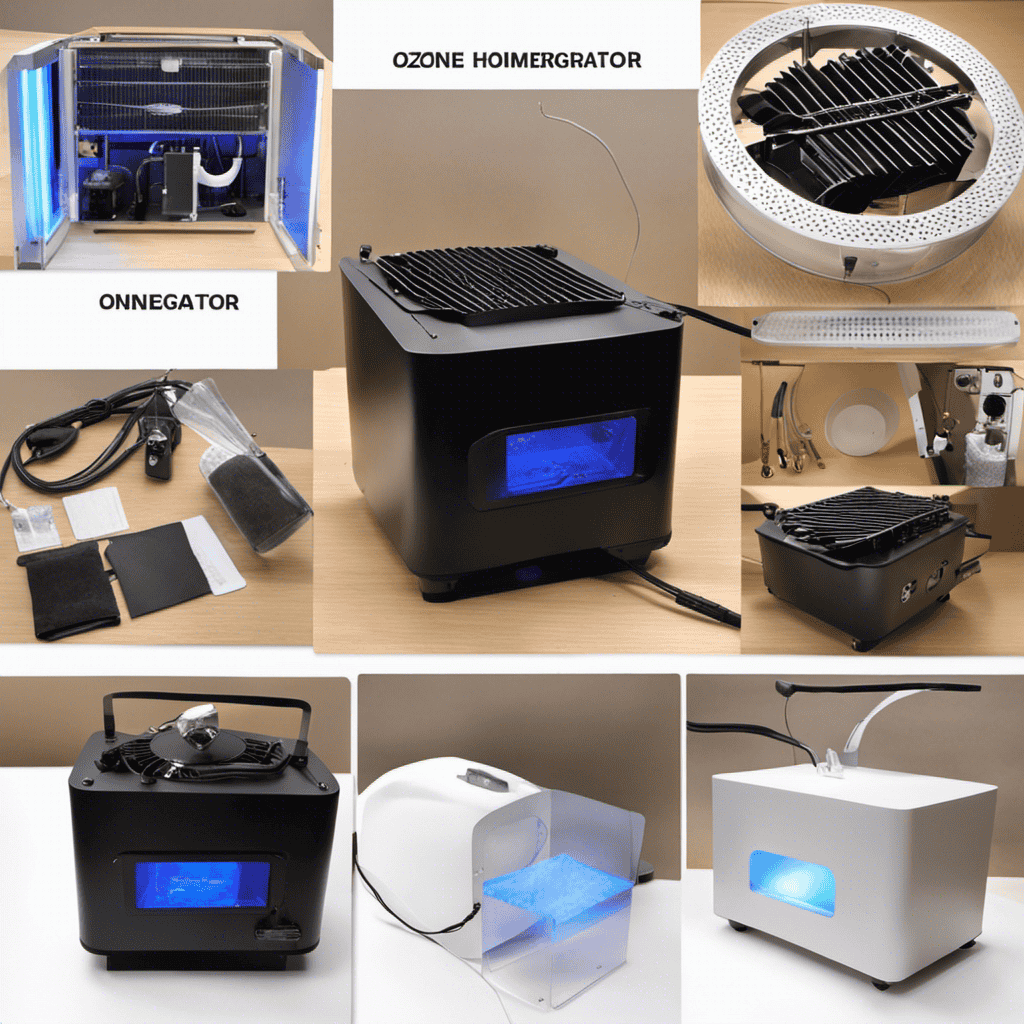
 Air Purifier Guides6 months ago
Air Purifier Guides6 months agoHow to Make a Homemade Ozone Generator (Air Purifier
-
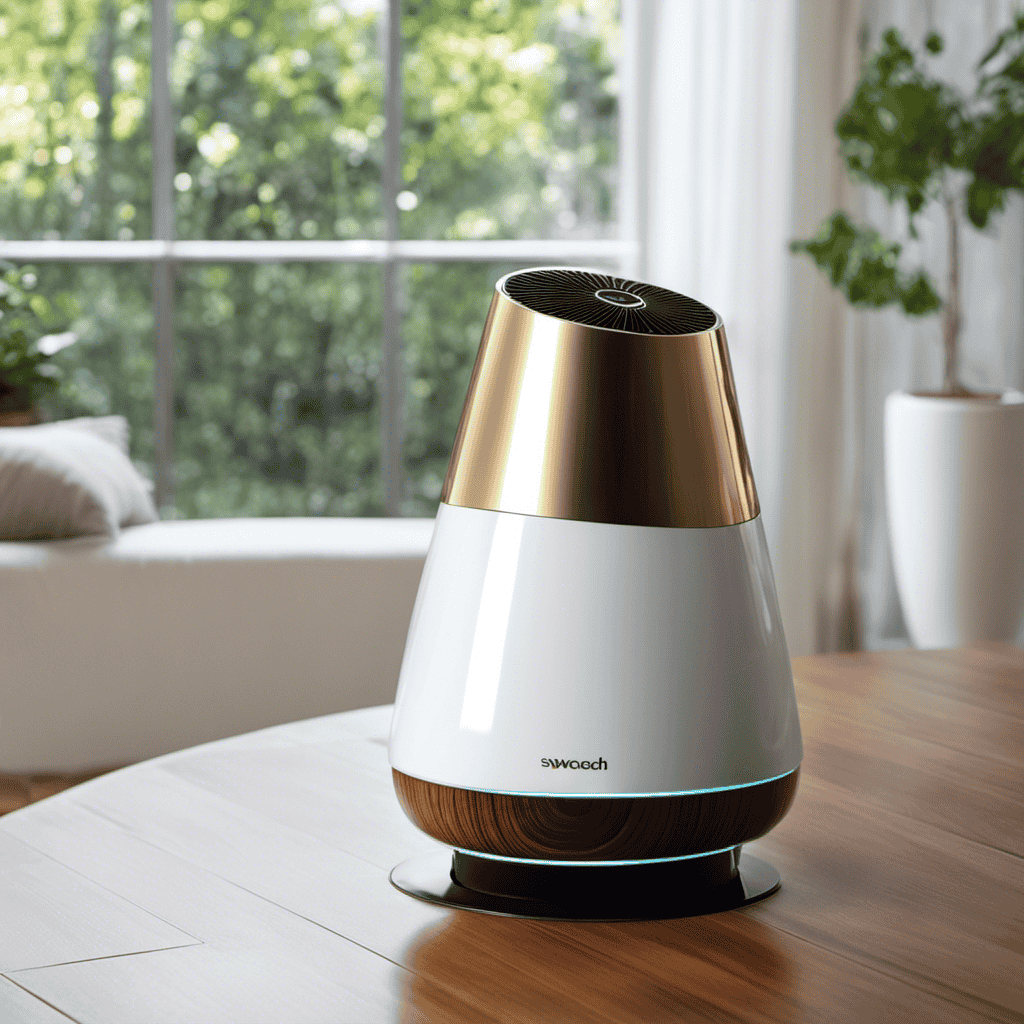
 Types of Air Purifiers9 months ago
Types of Air Purifiers9 months agoWhat Is an Air Purifier
-
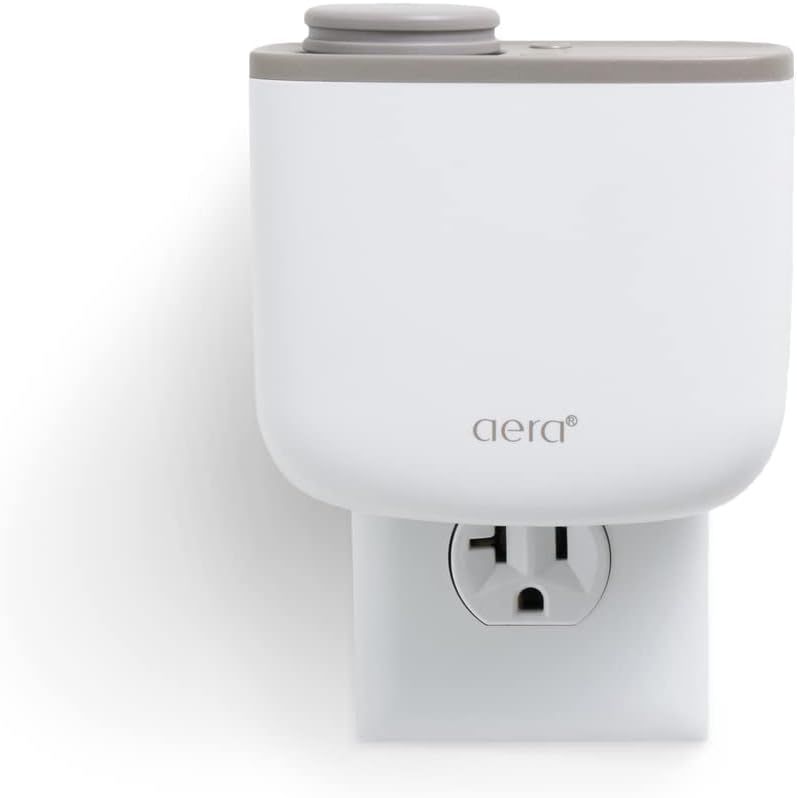
 Vetted8 months ago
Vetted8 months agoAera Mini Review: Smart Home Fragrance Diffuser With Hypoallergenic Scent Technology (2023)
-
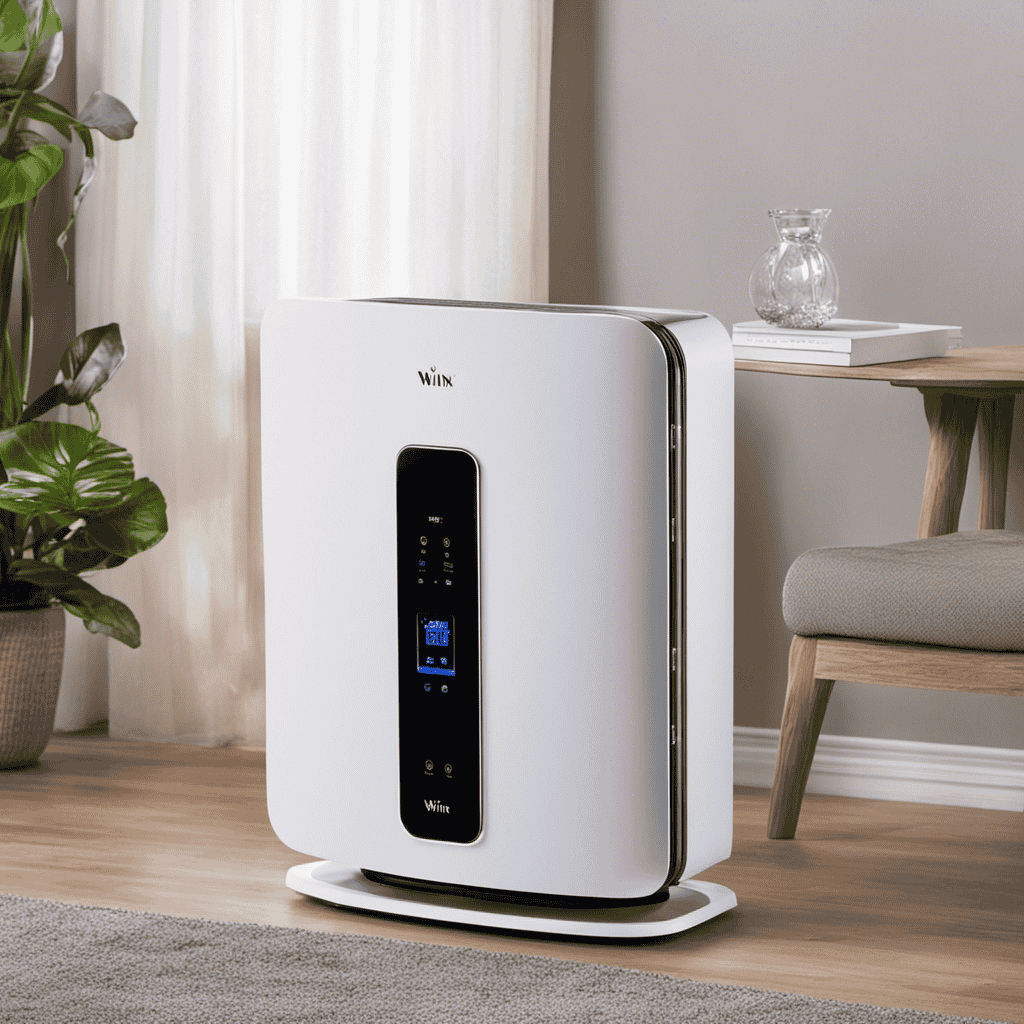
 Maintenance and Tips11 months ago
Maintenance and Tips11 months agoHow to Reset Filter Light on Winix Plasmawave Air Purifier
-
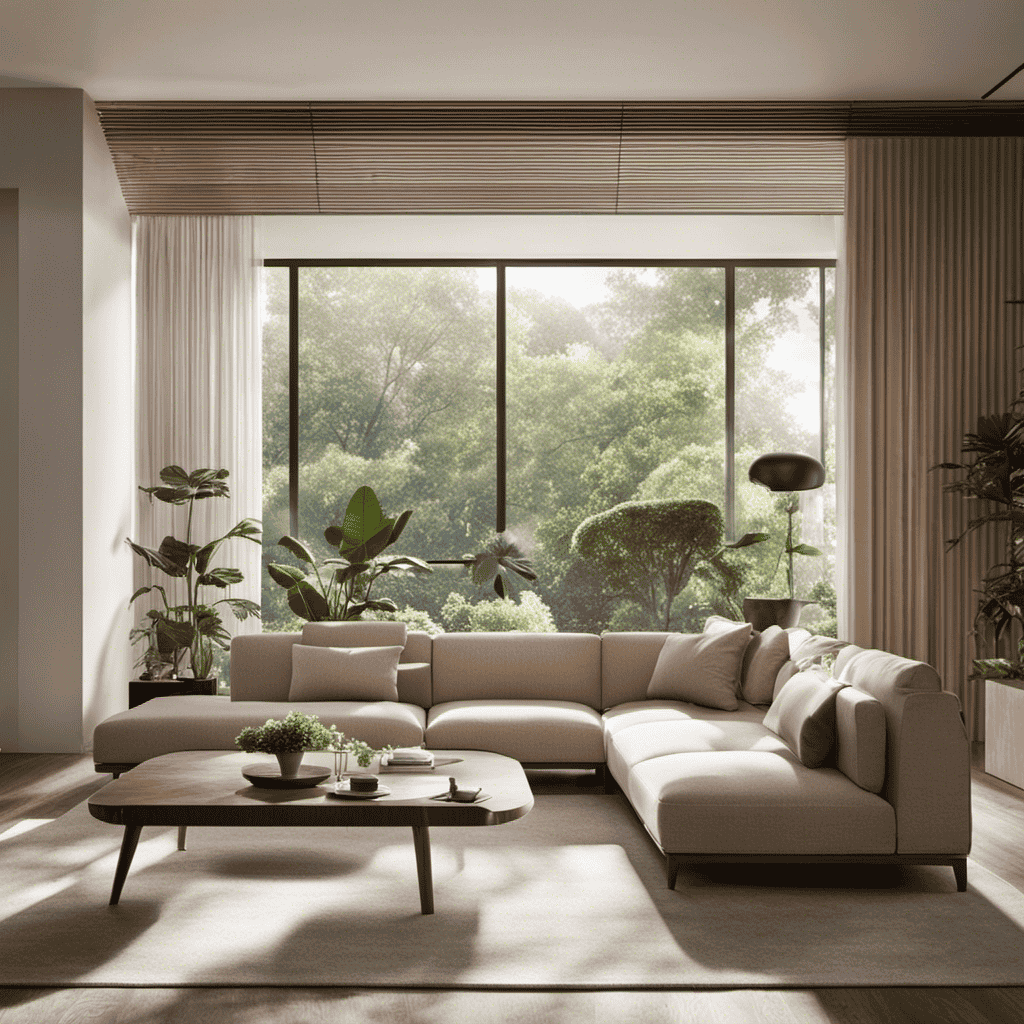
 FAQs - Advanced Queries1 month ago
FAQs - Advanced Queries1 month agoWhen to Use Ionizer on Coway Air Purifier
-
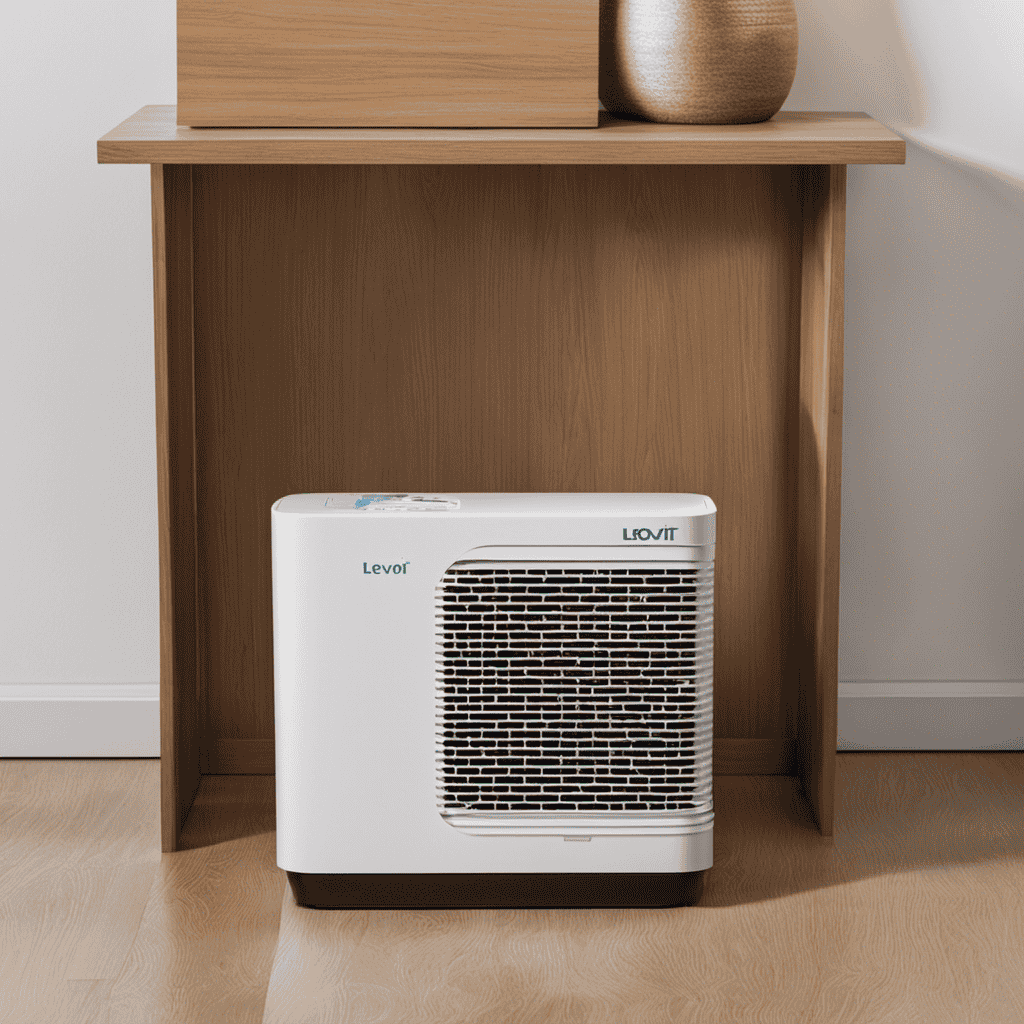
 Air Purifier Guides4 weeks ago
Air Purifier Guides4 weeks agoHow to Dispose of Air Purifier Filter Levoit






